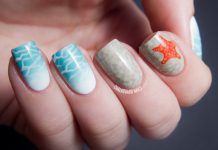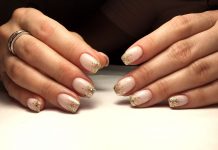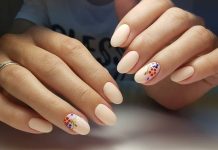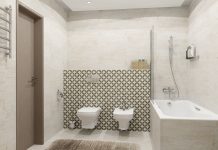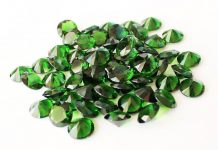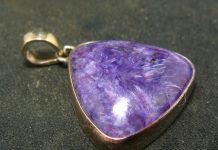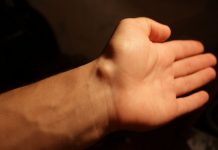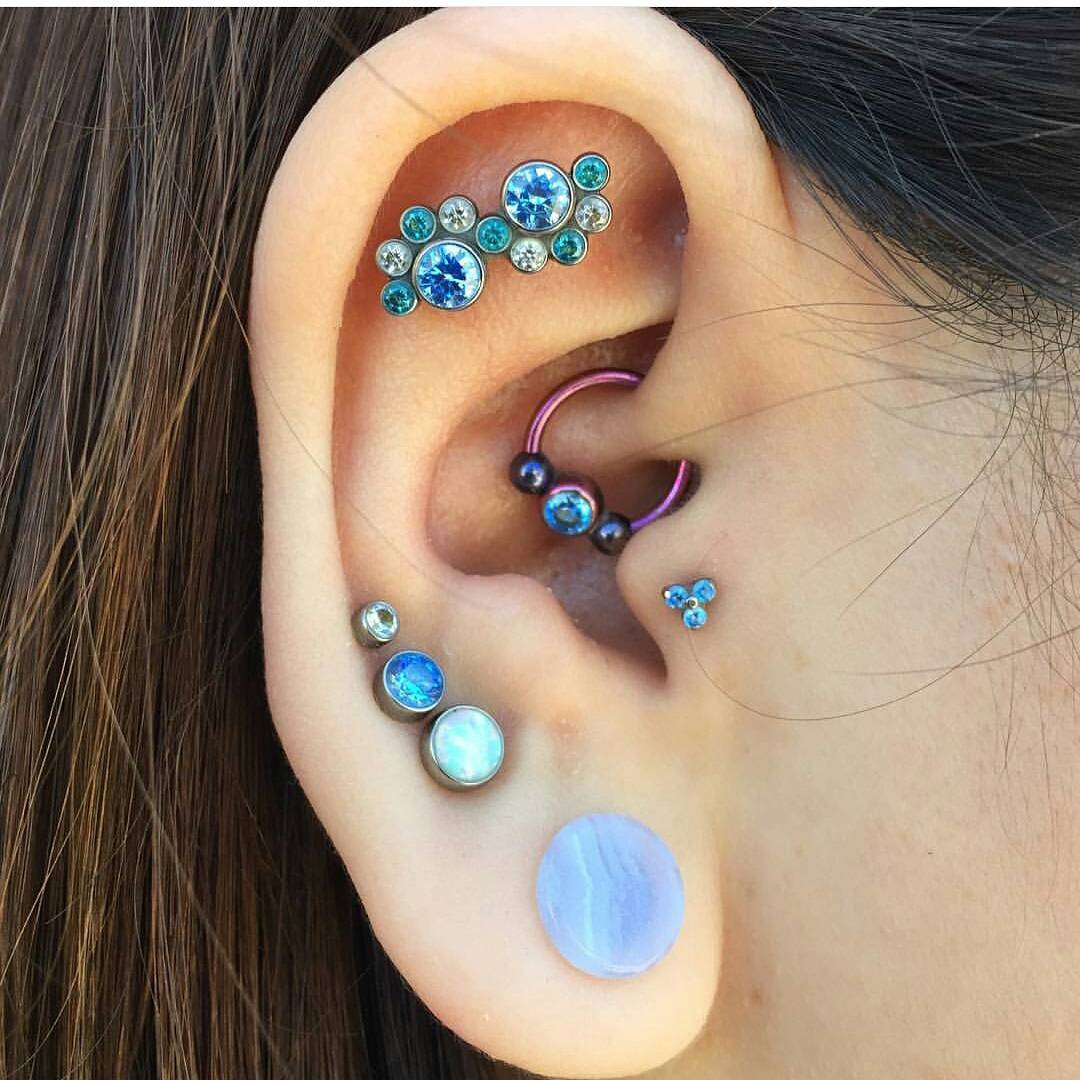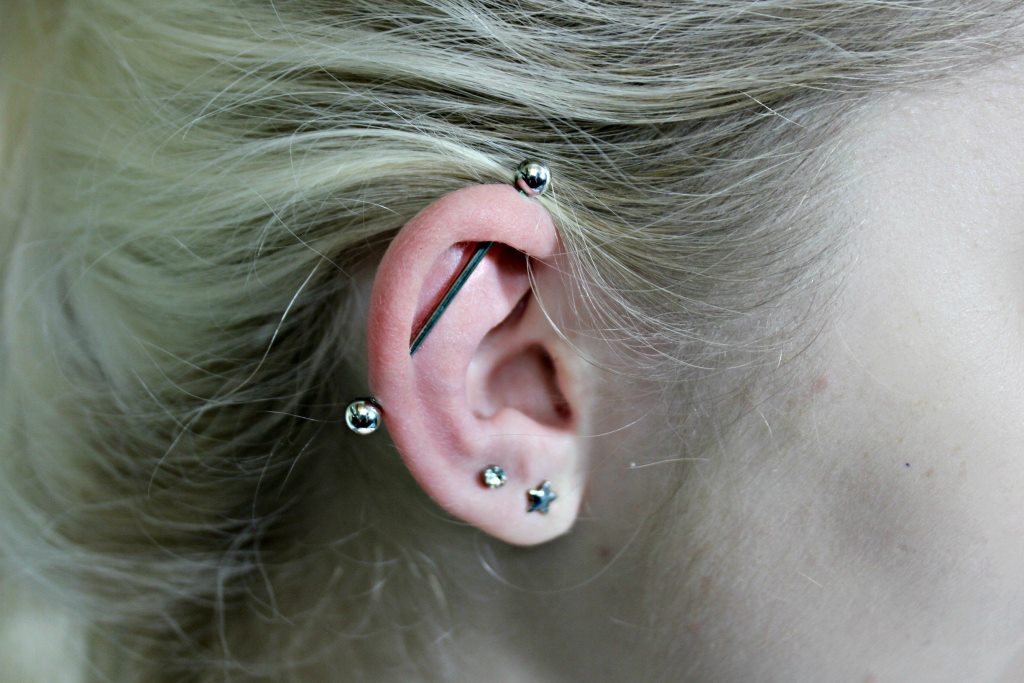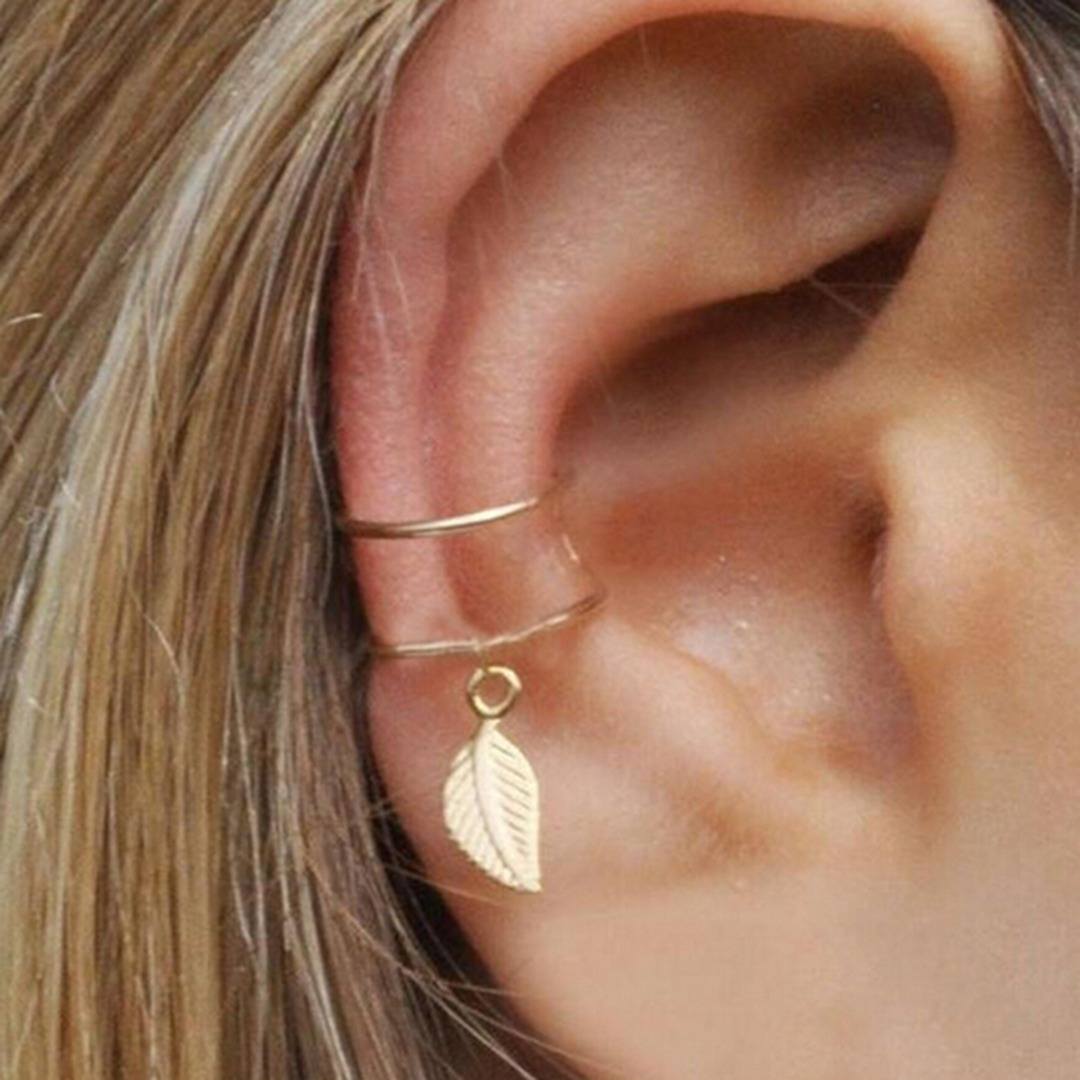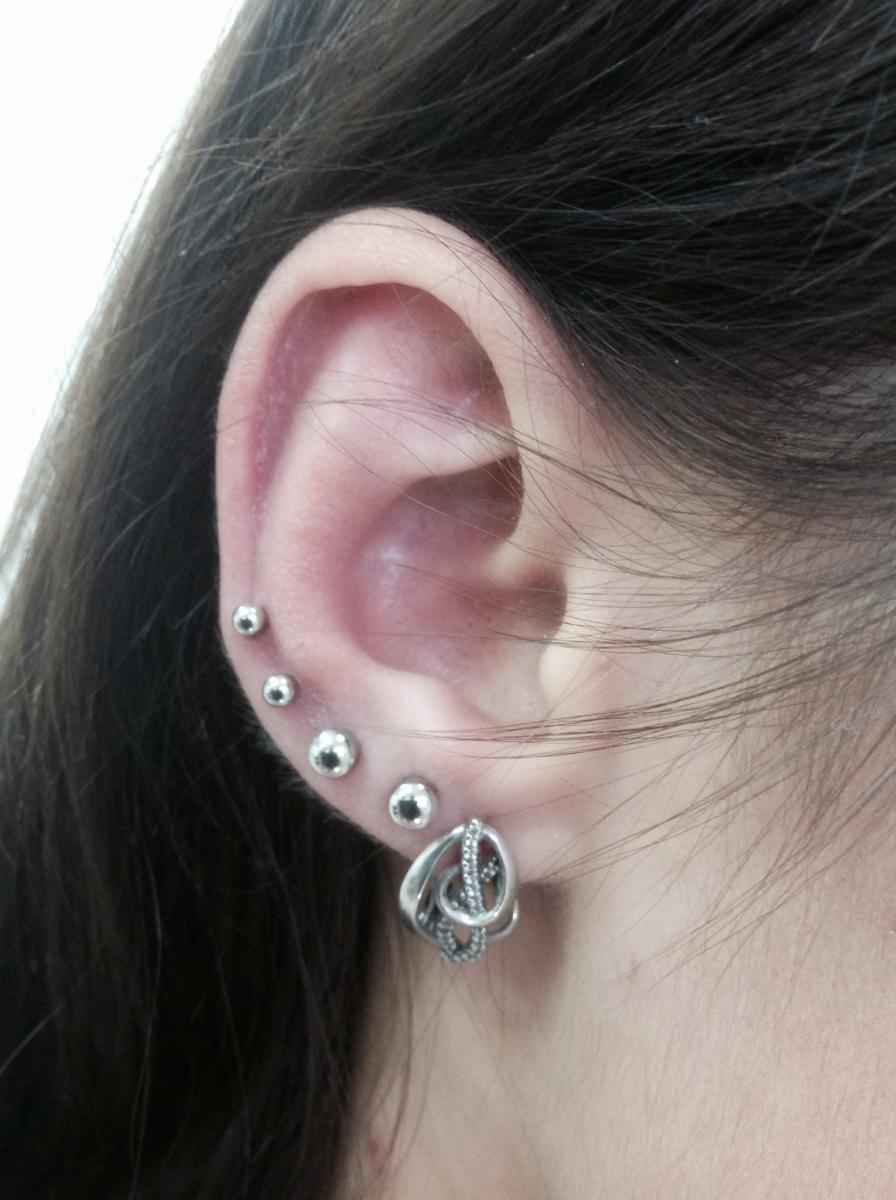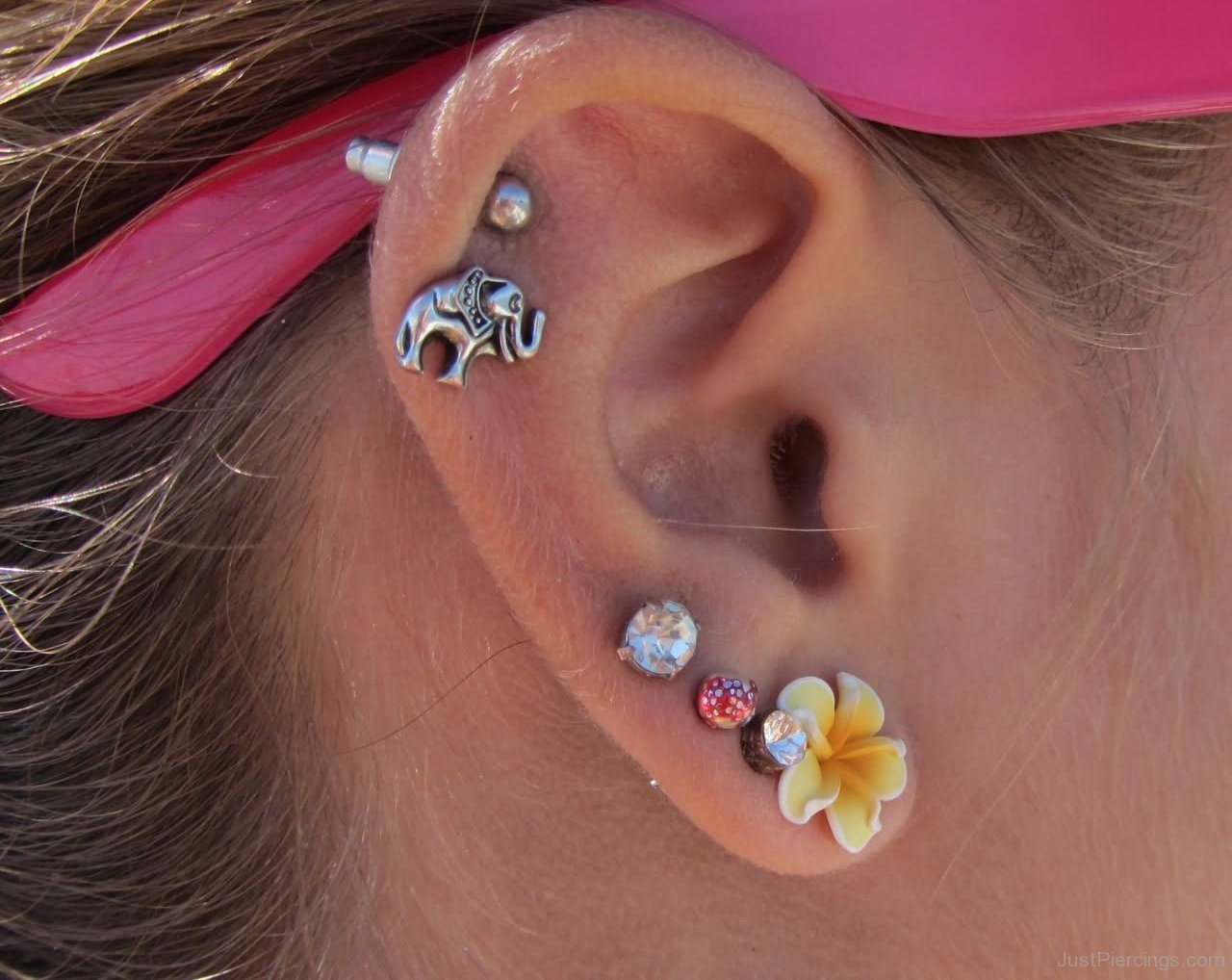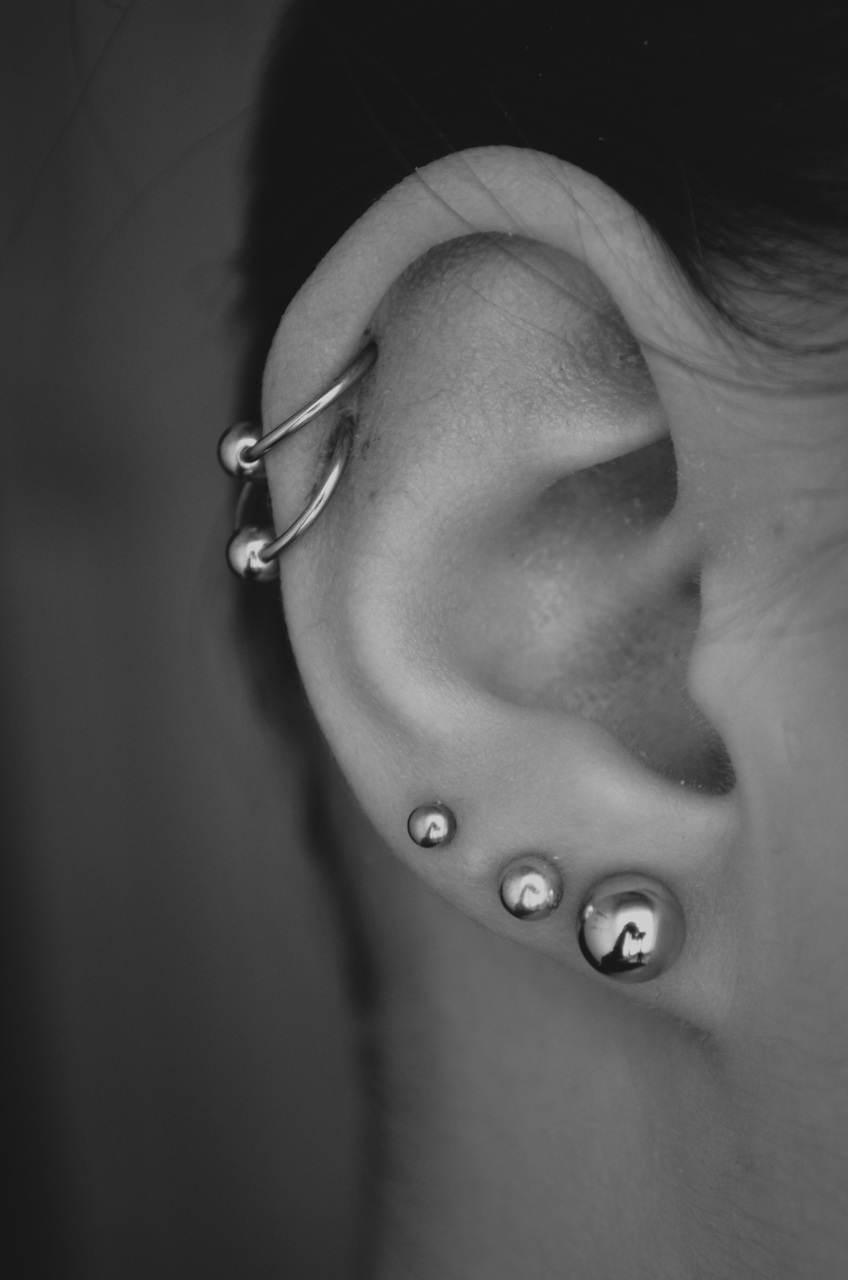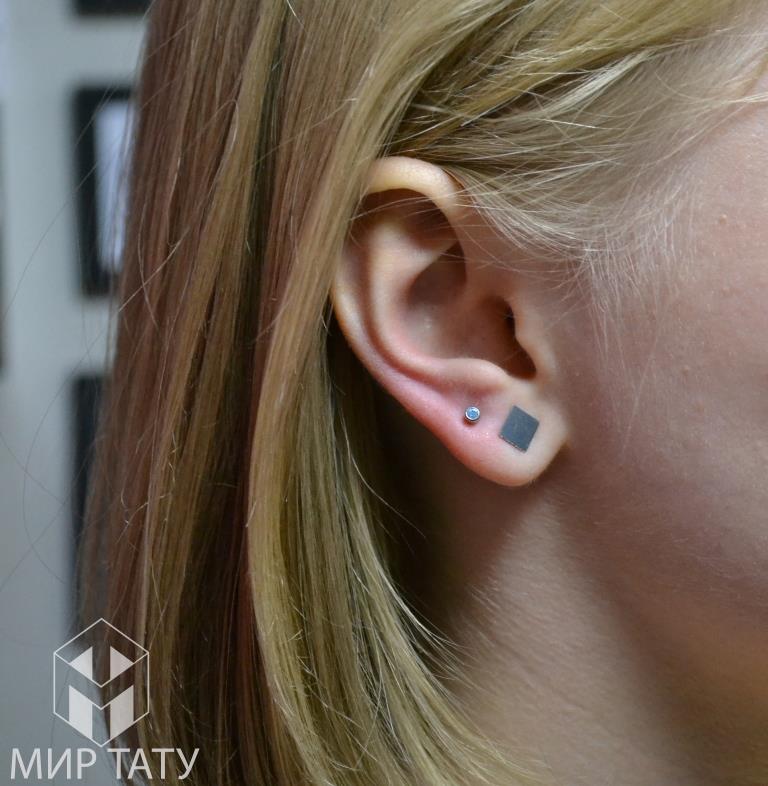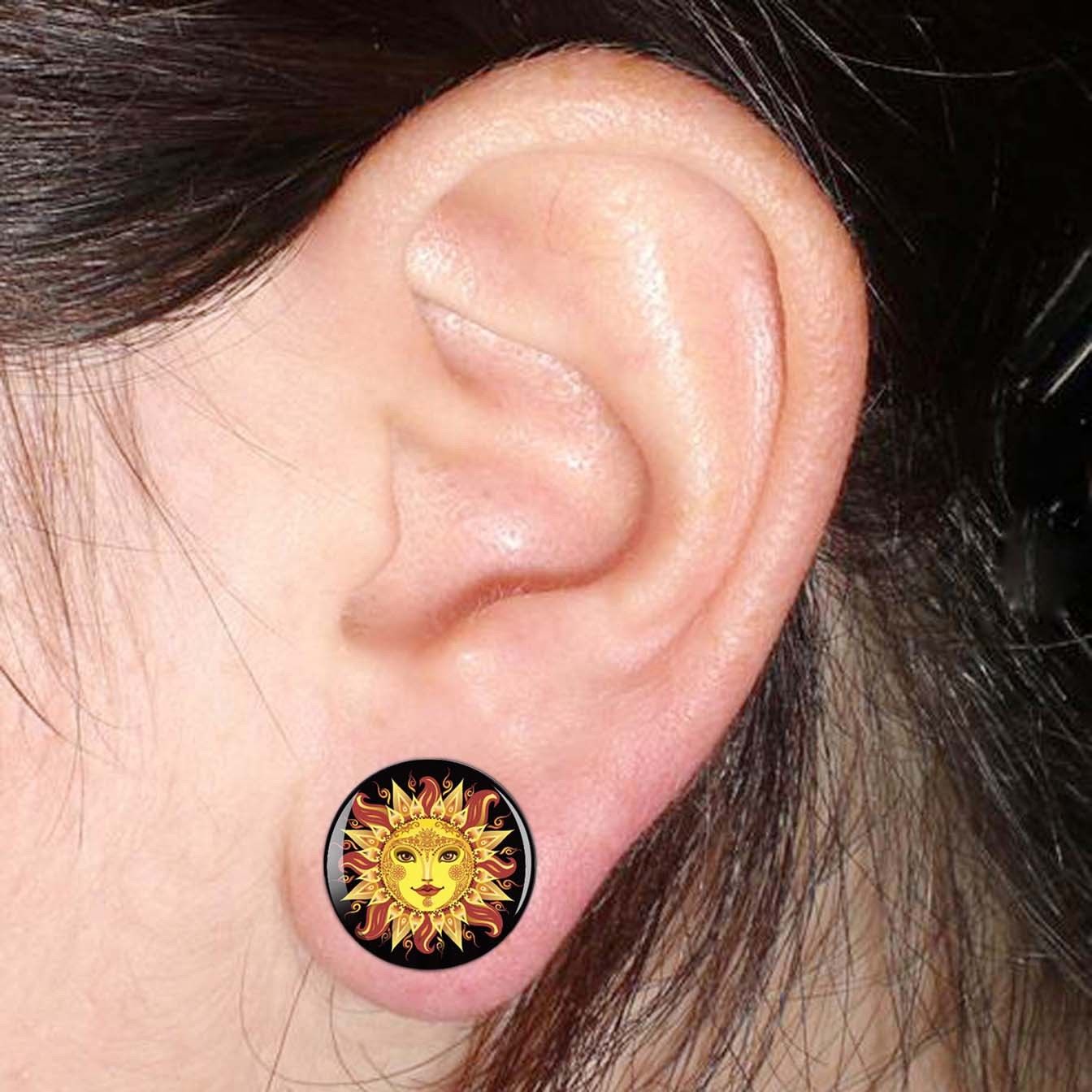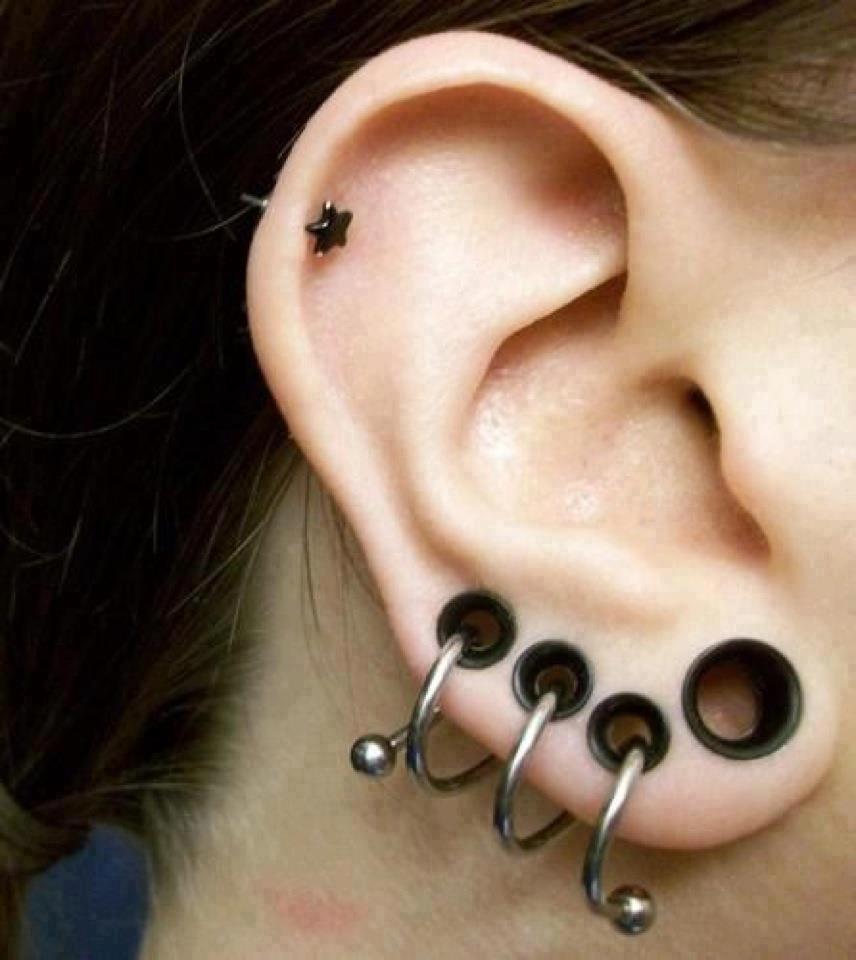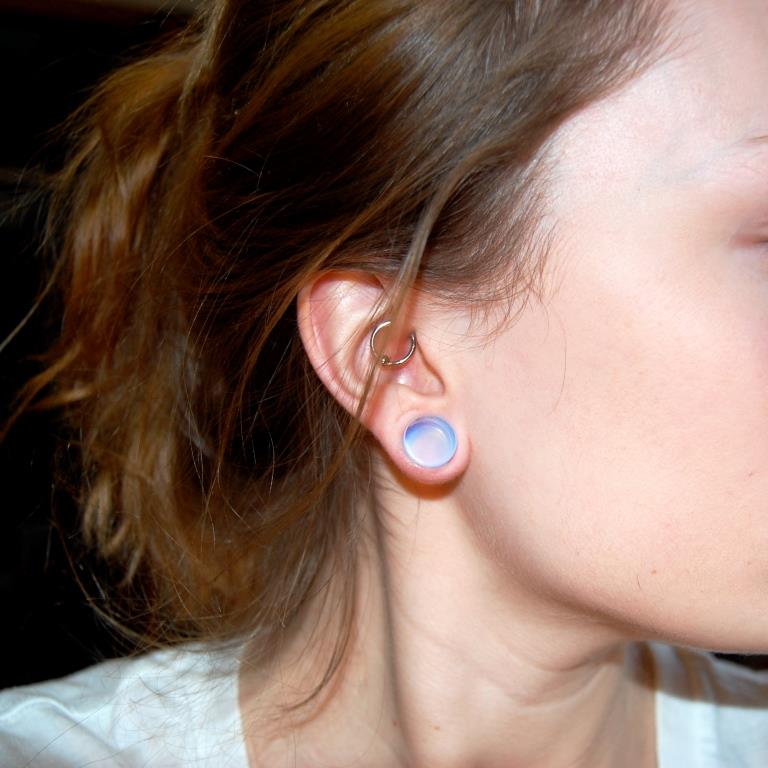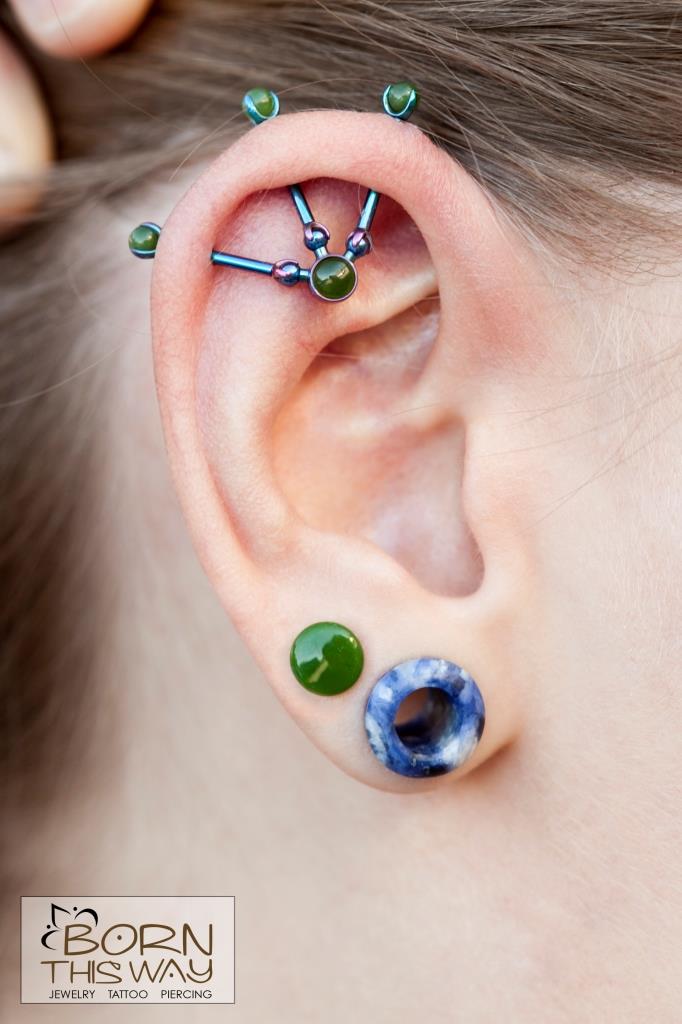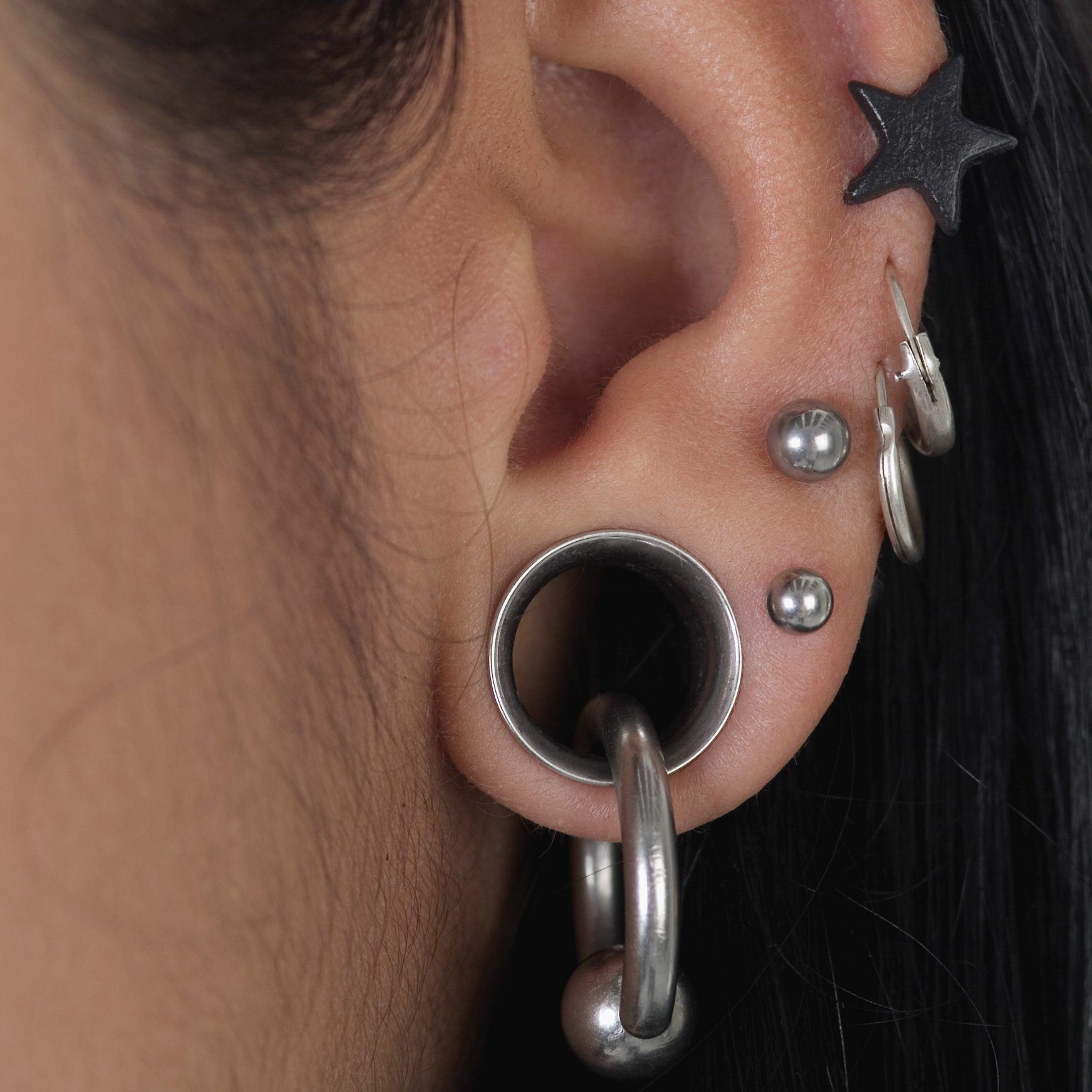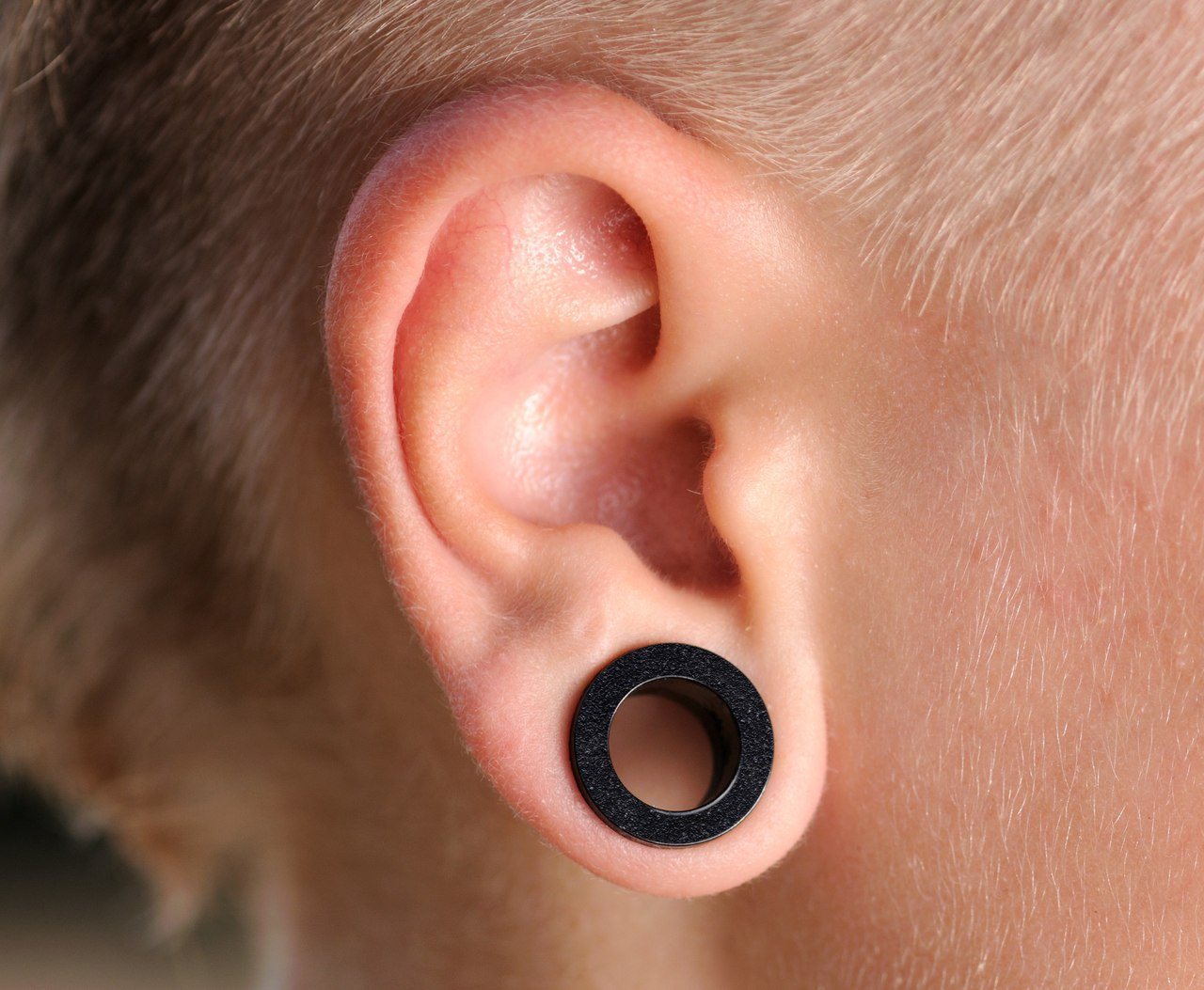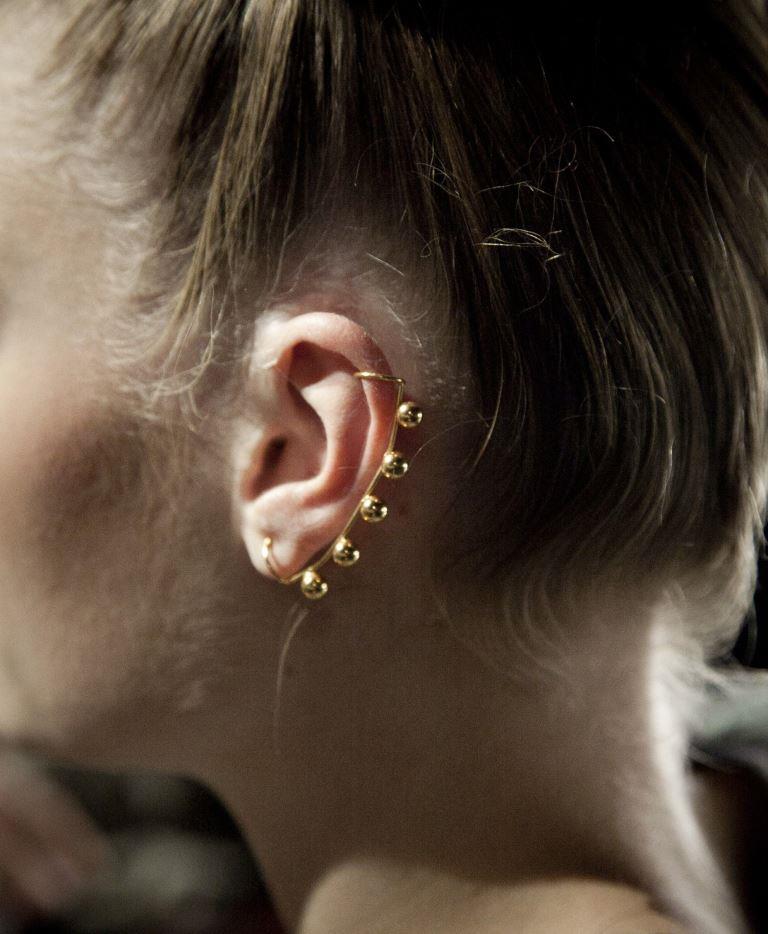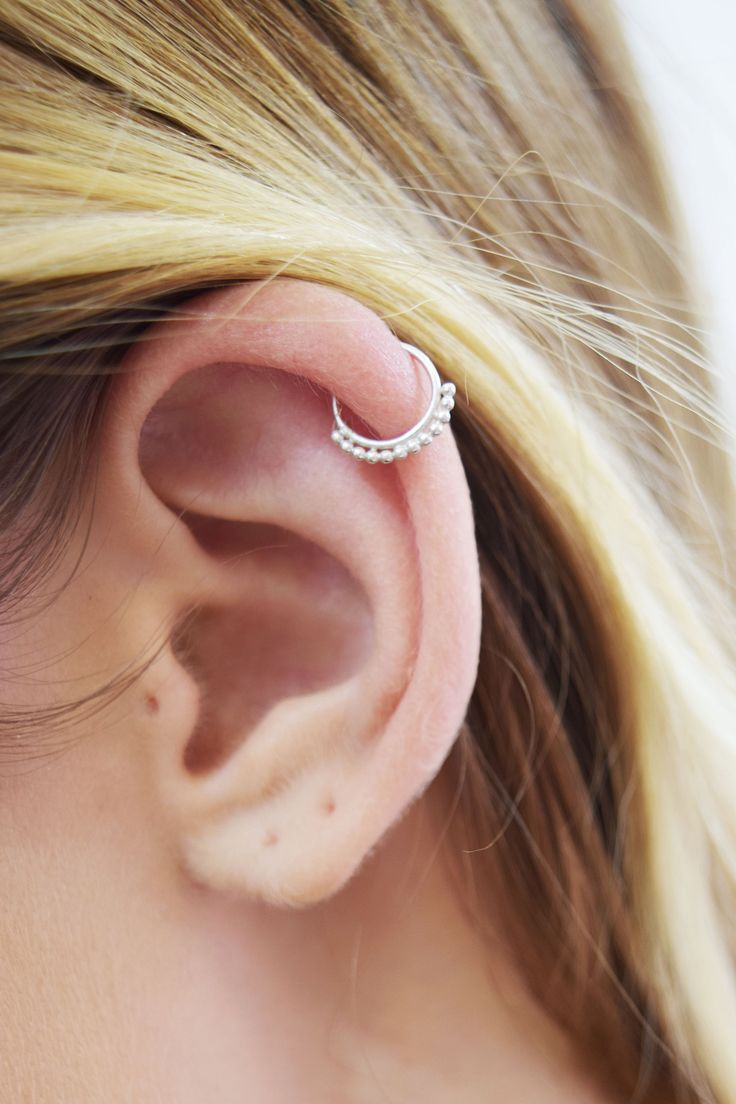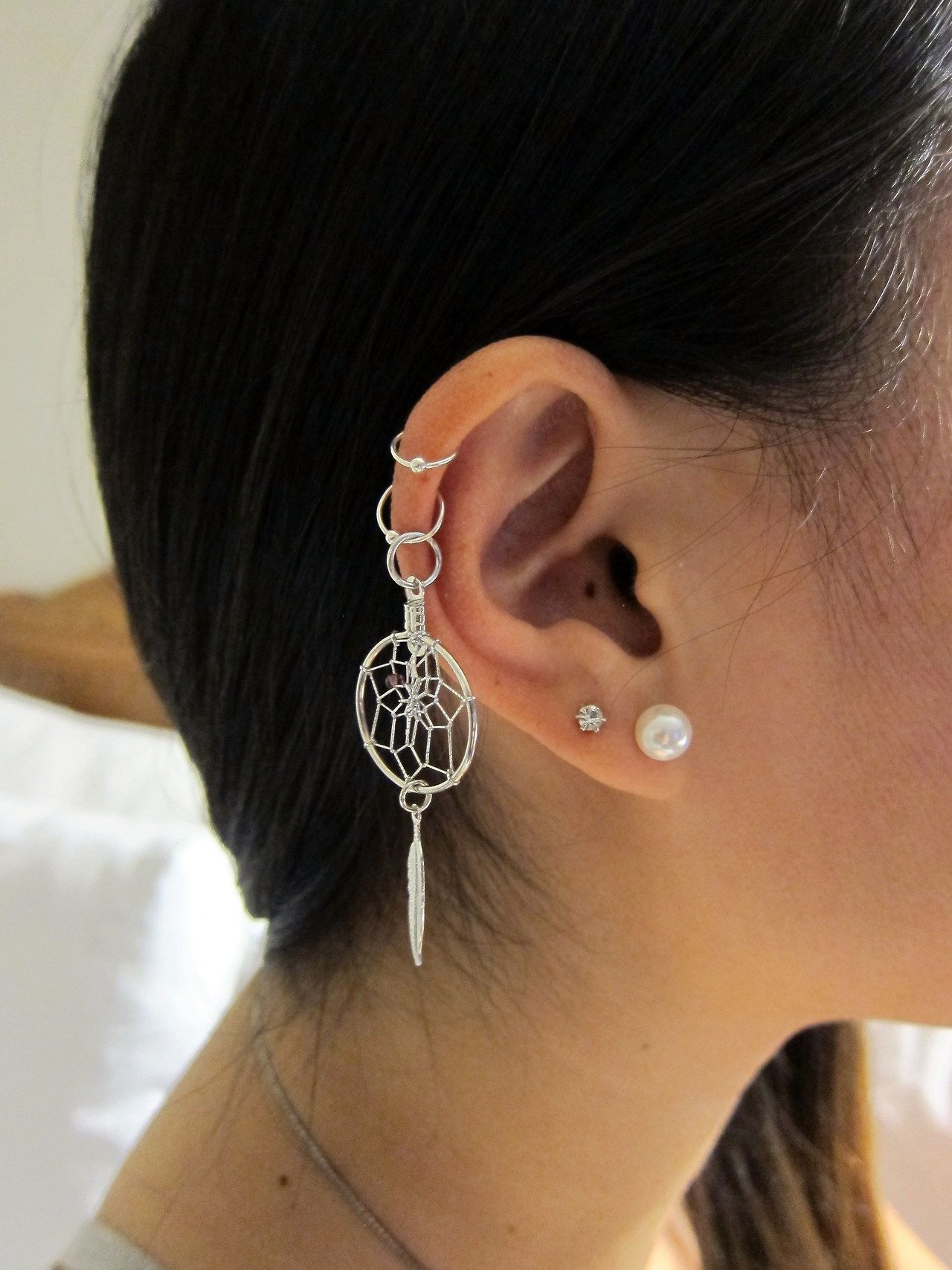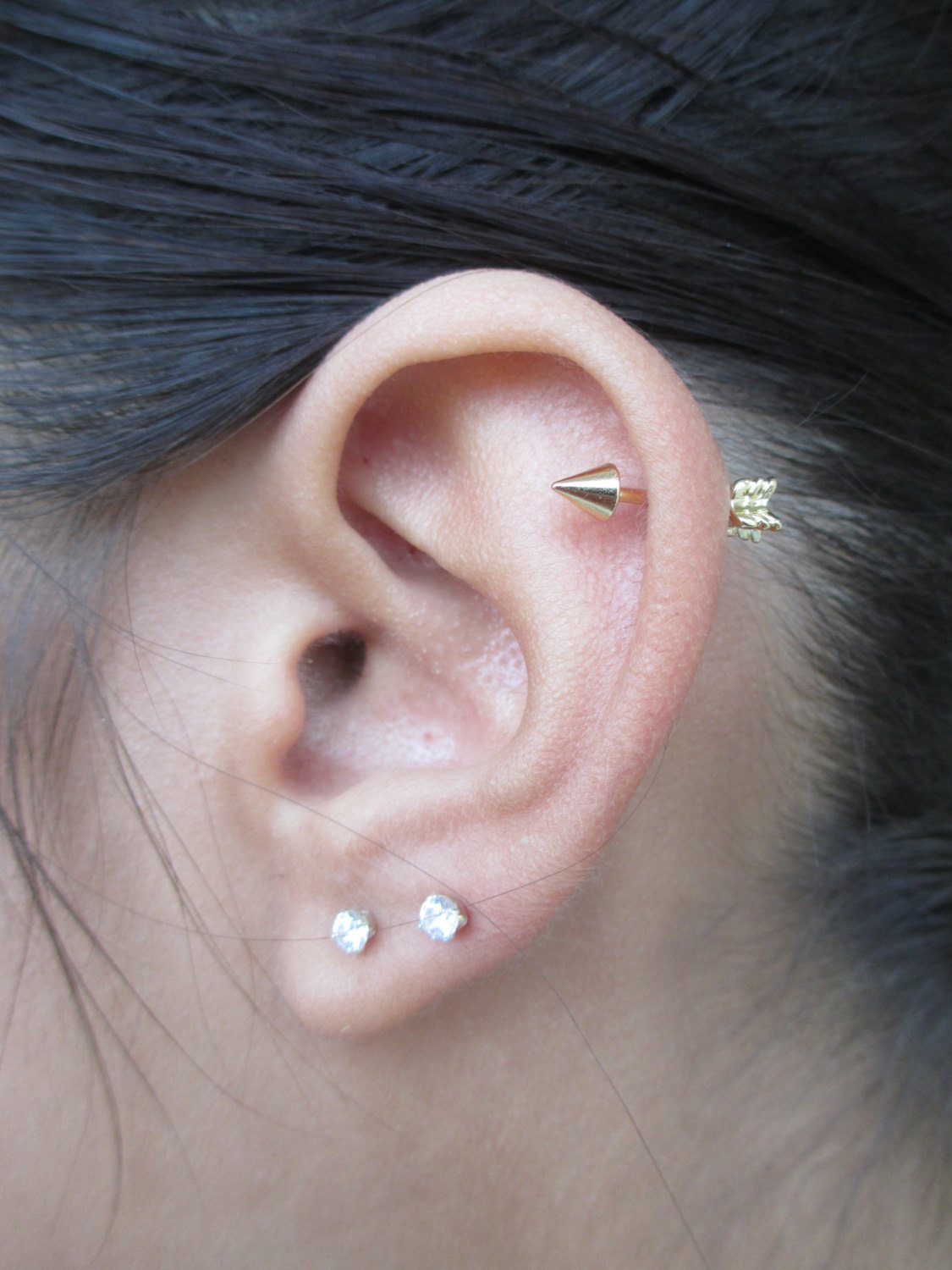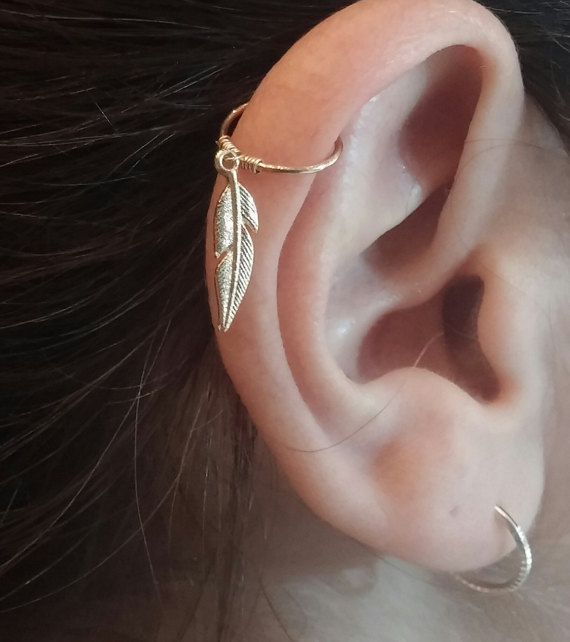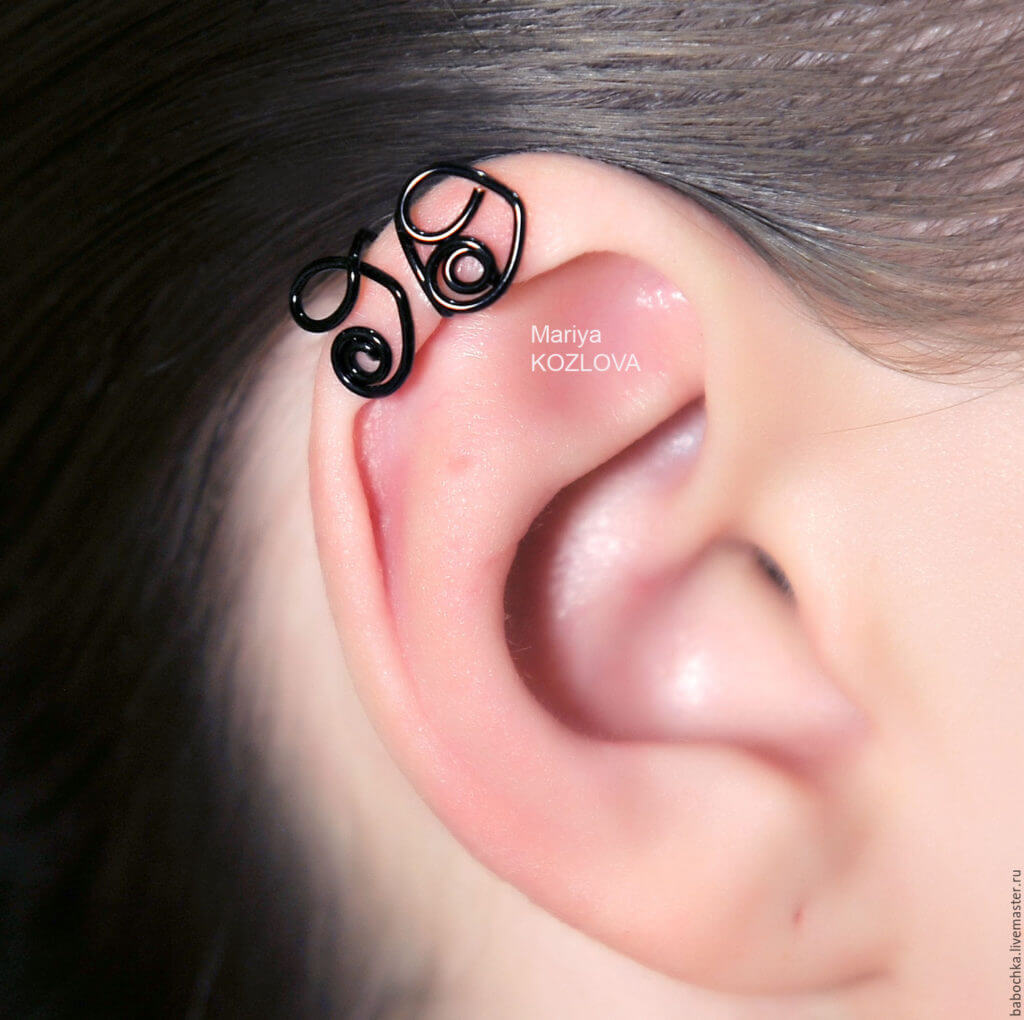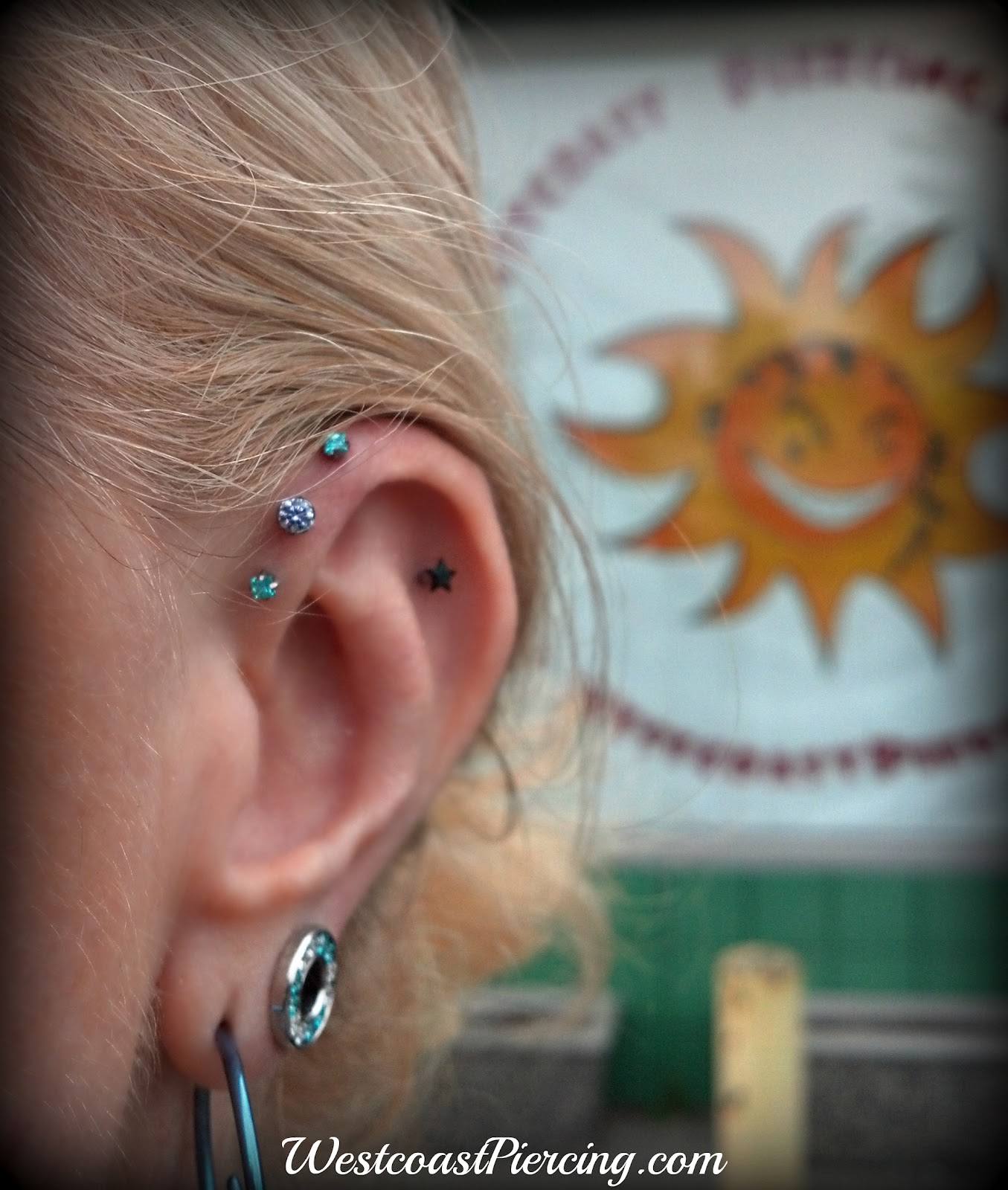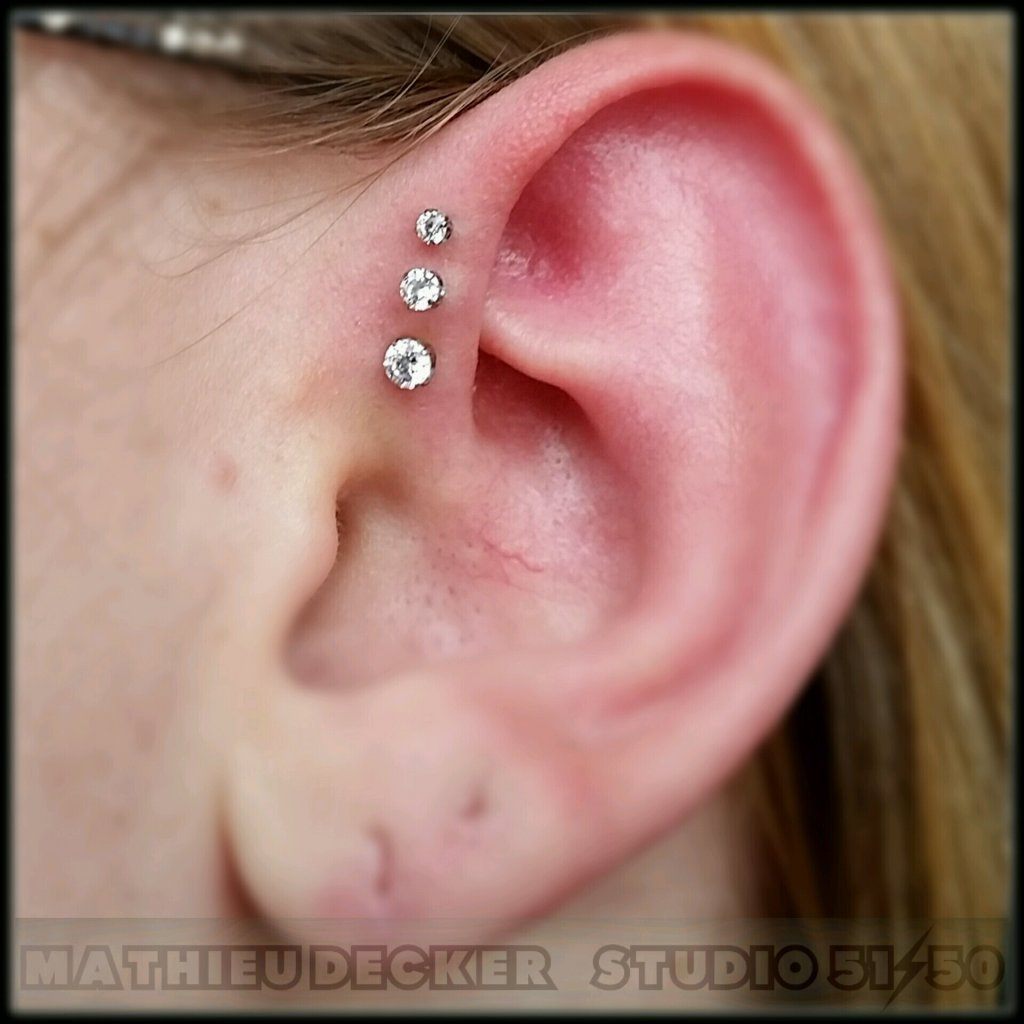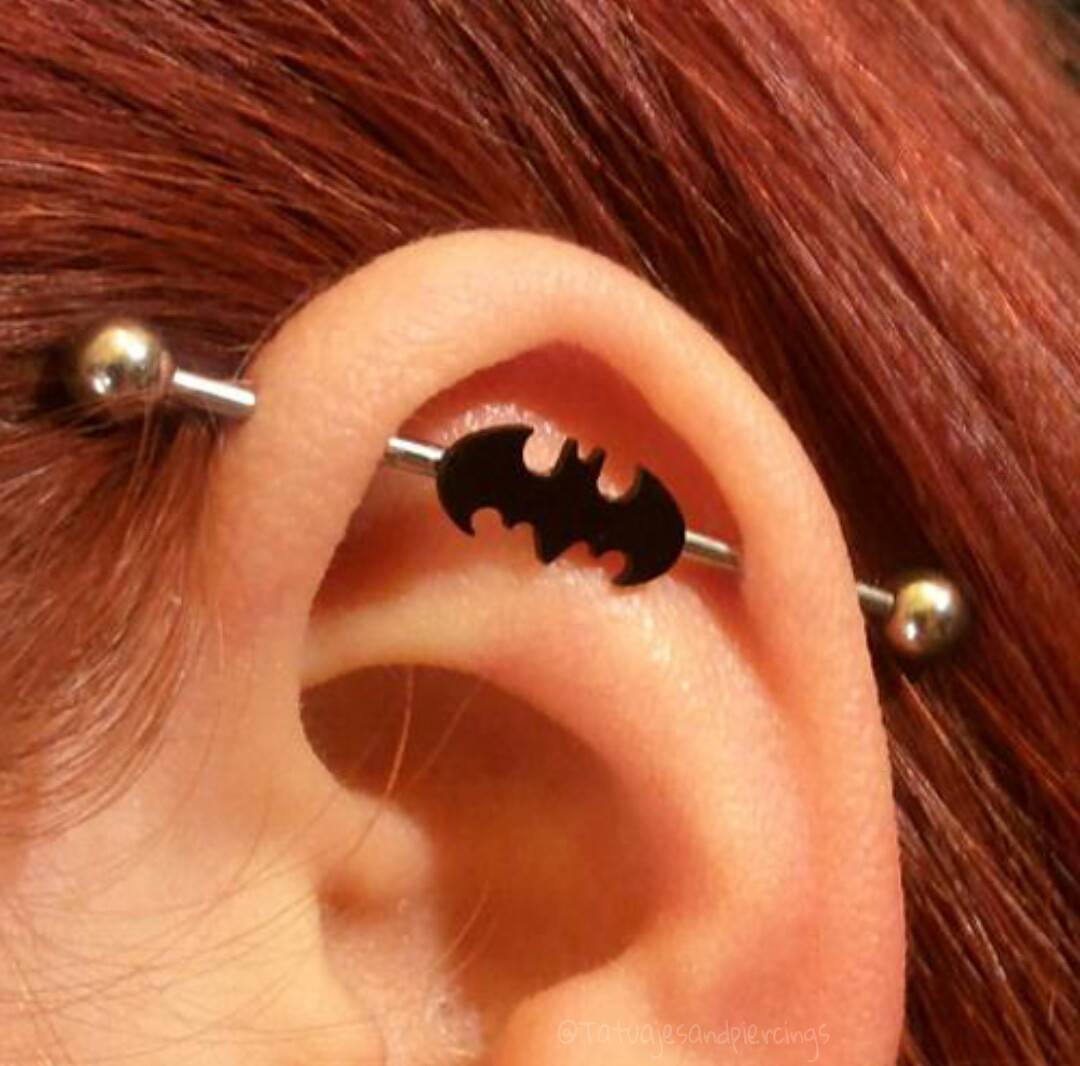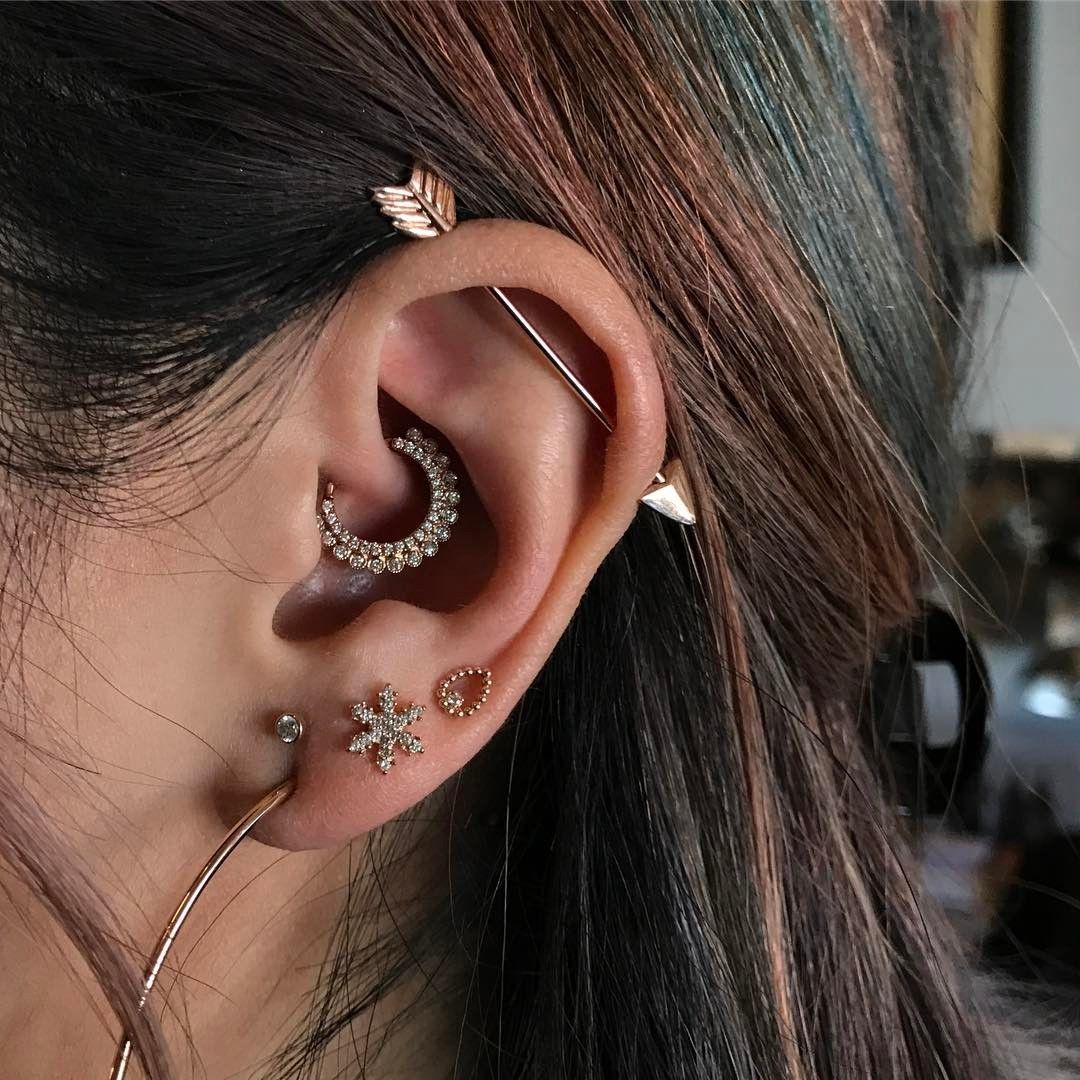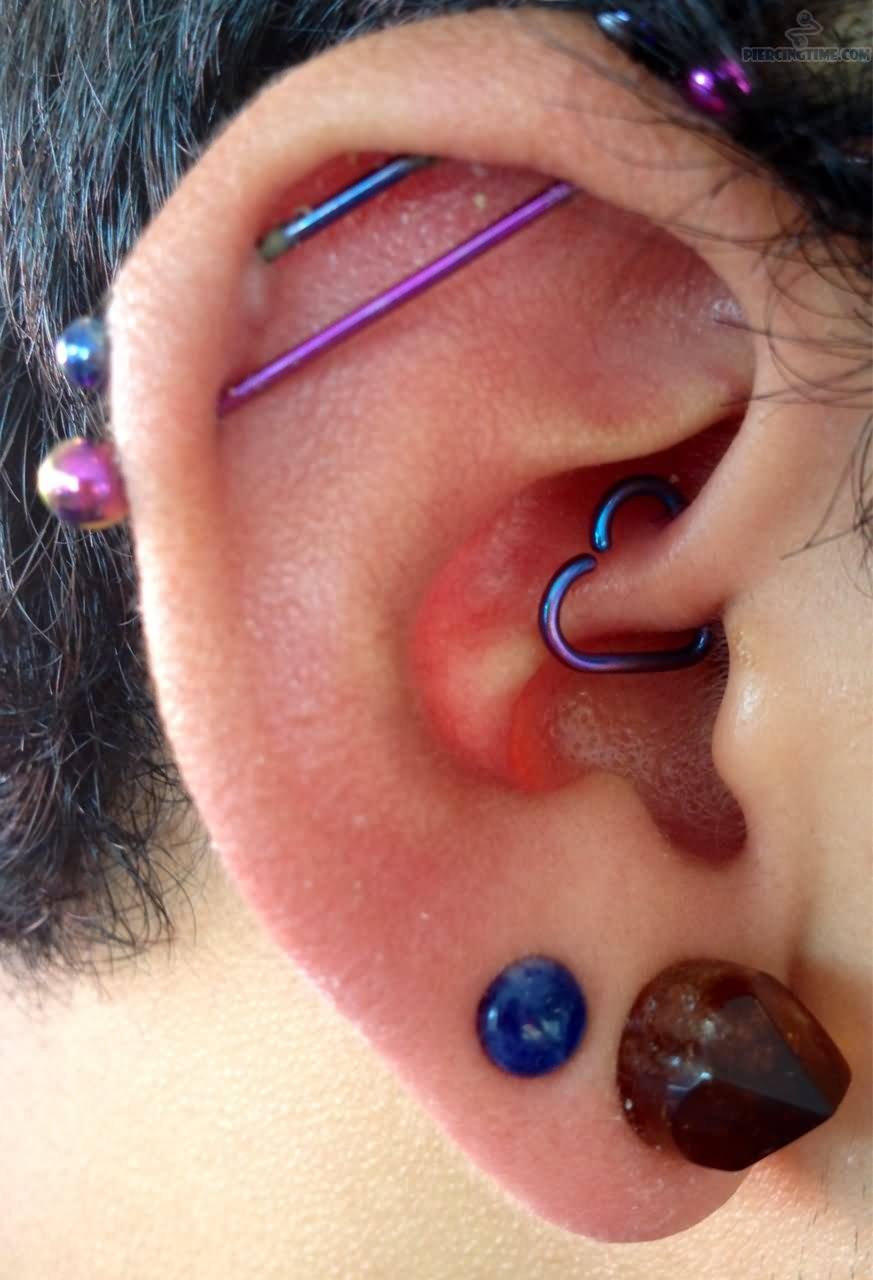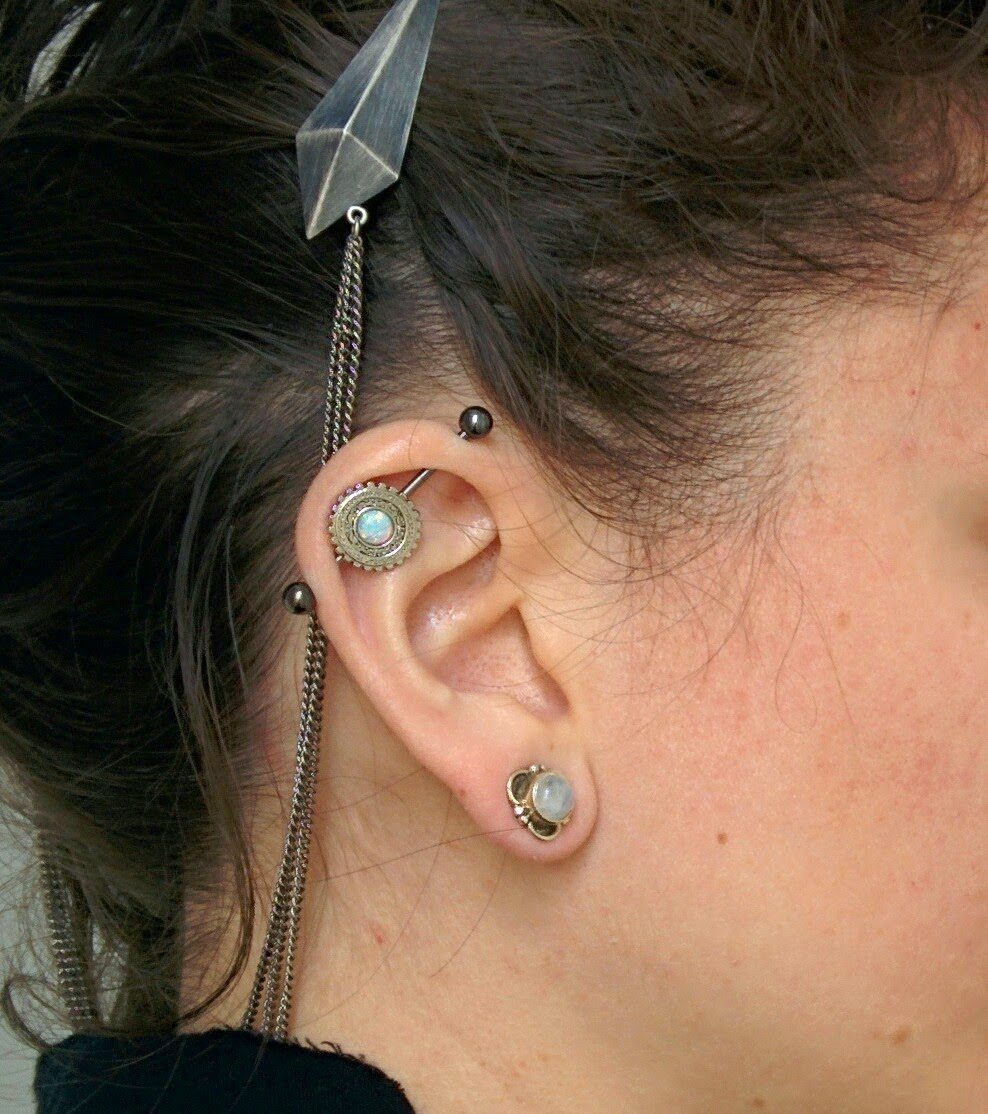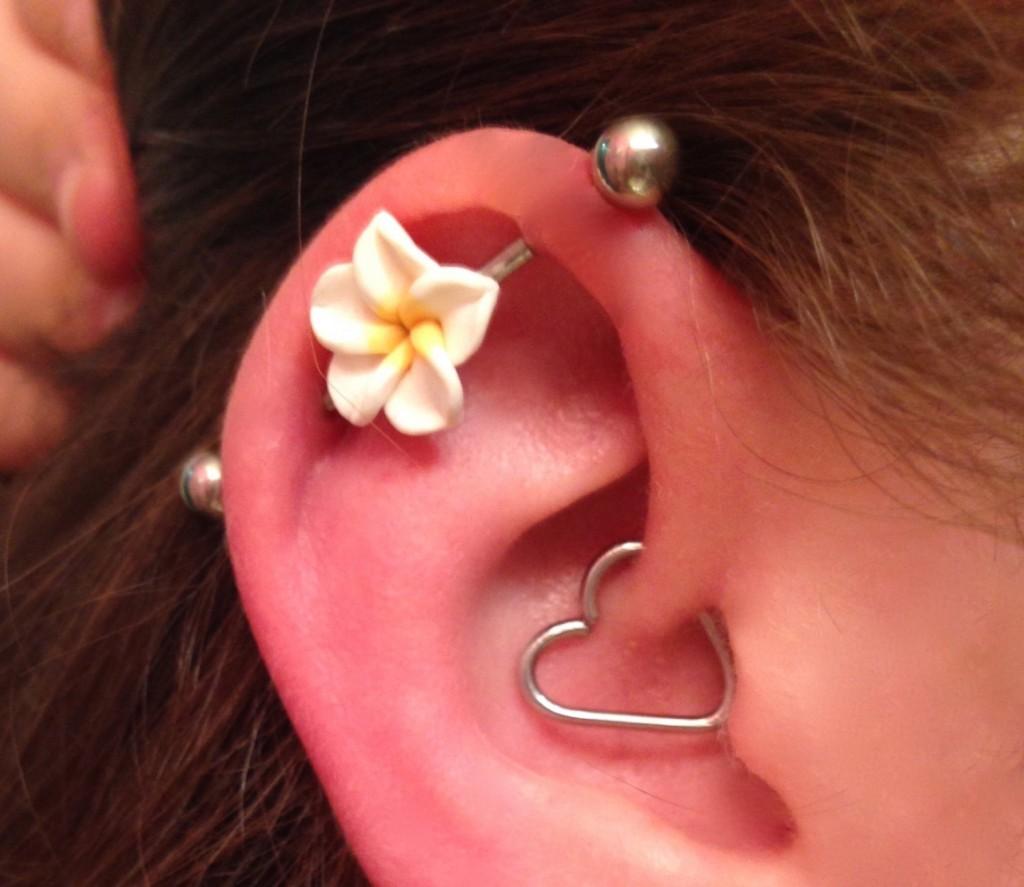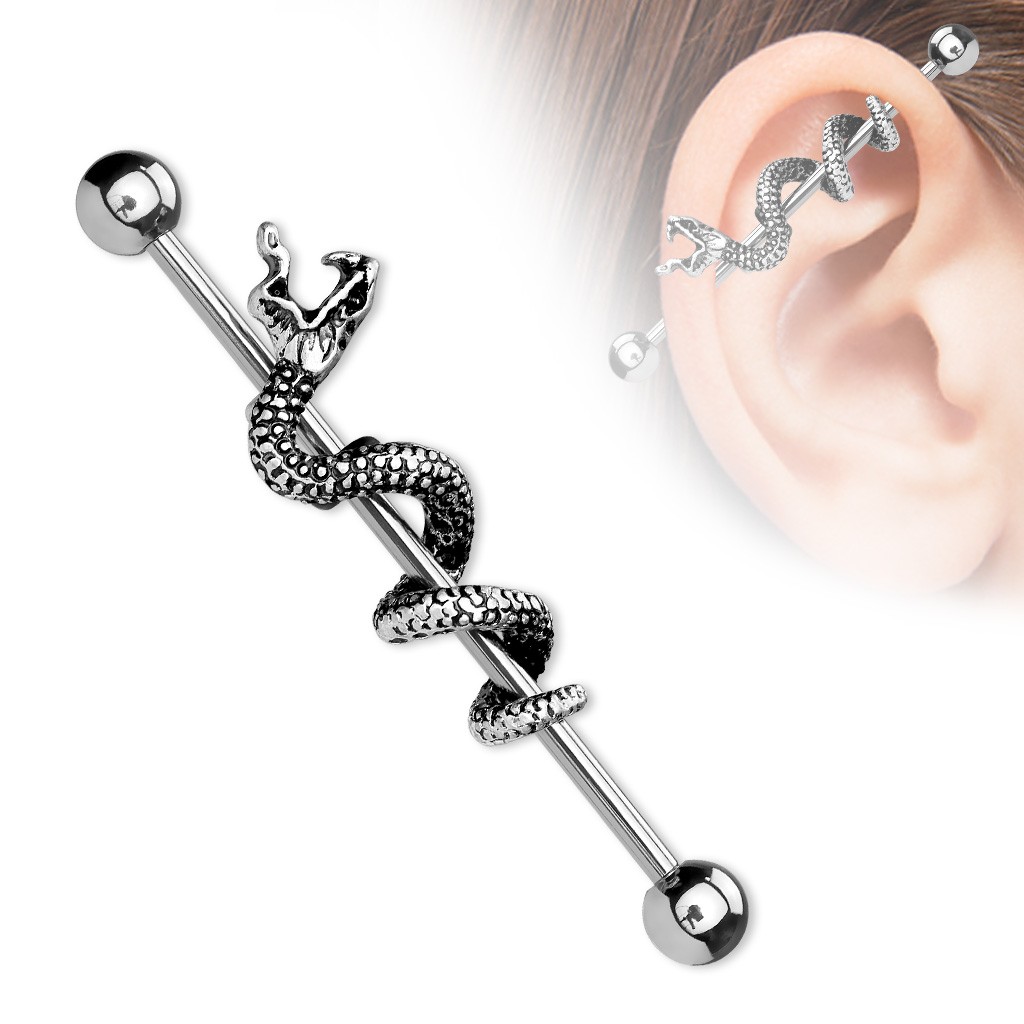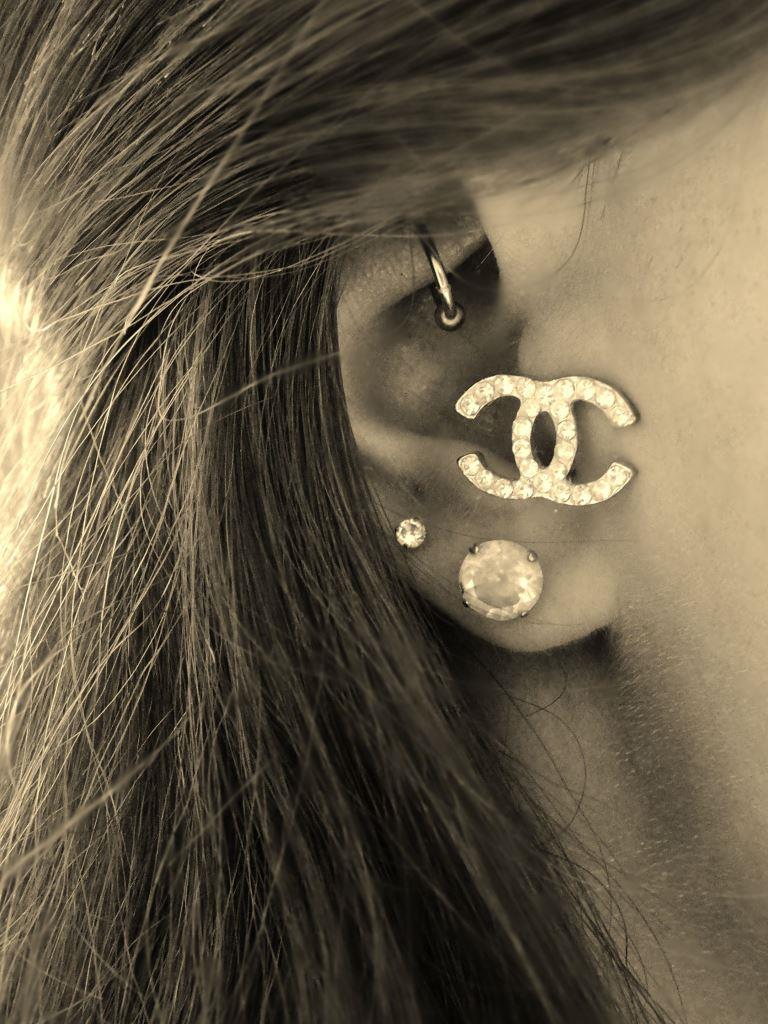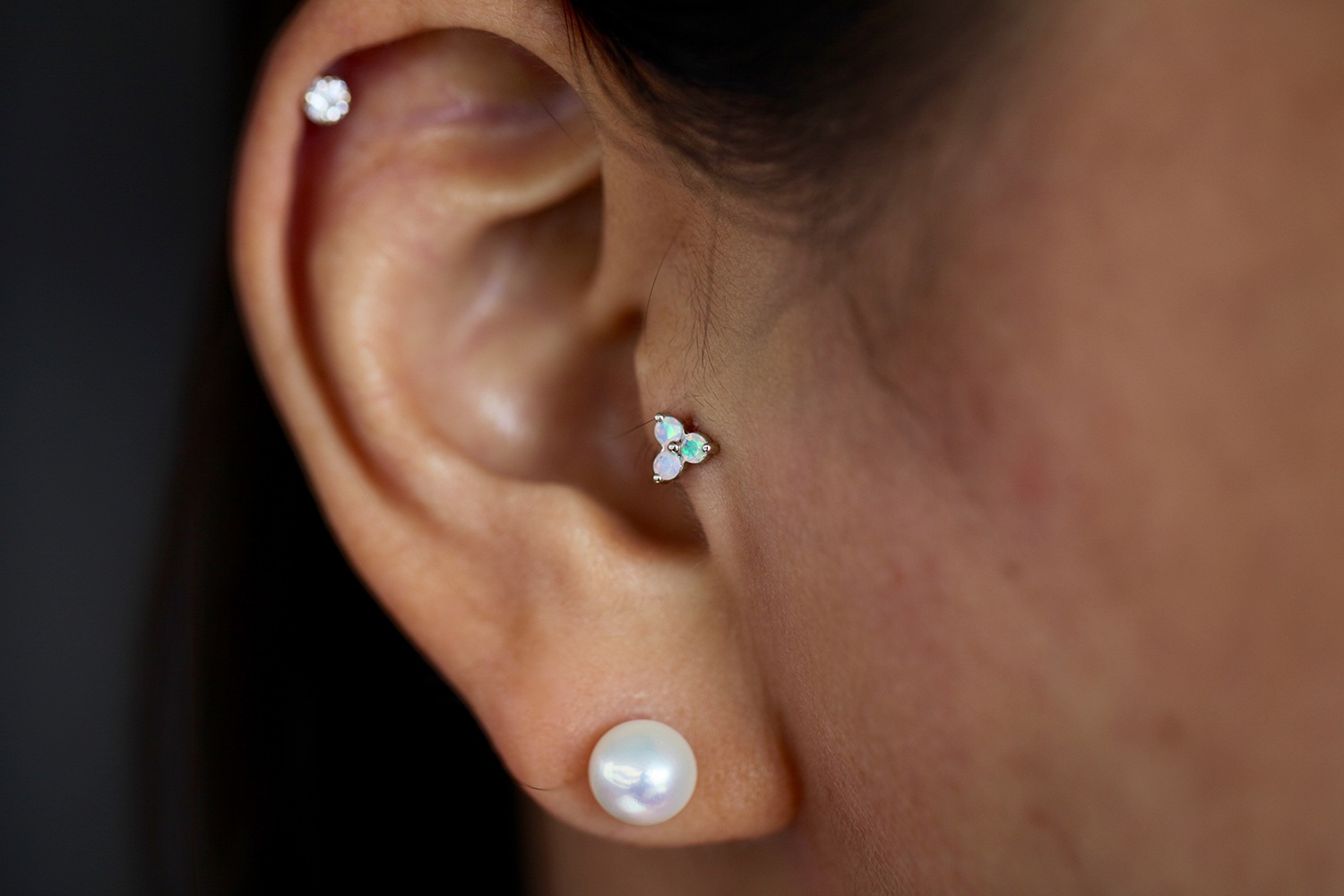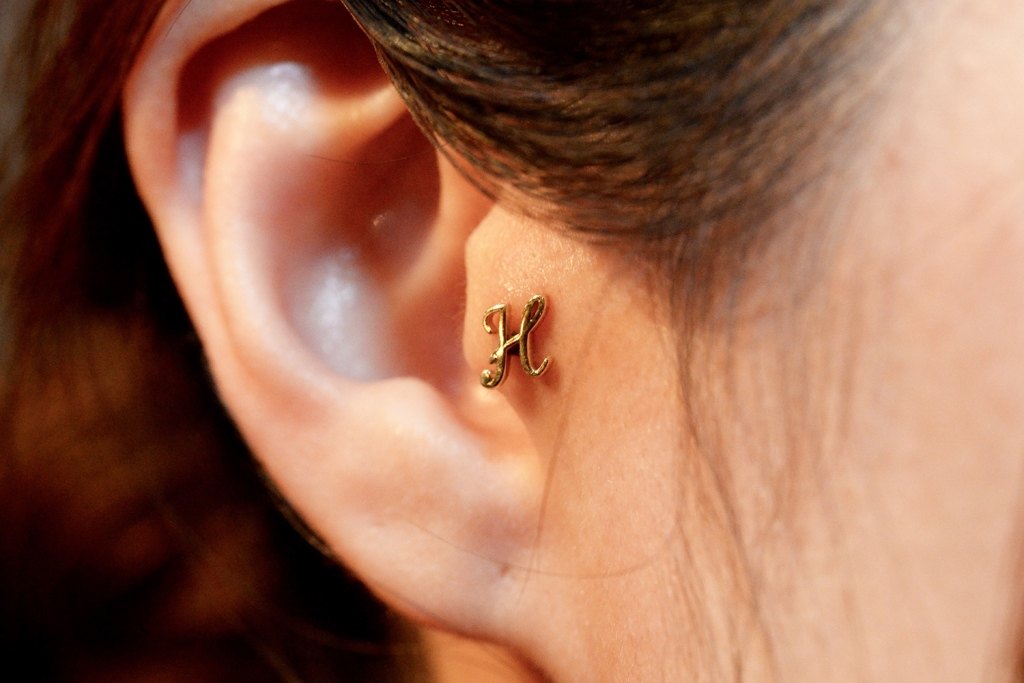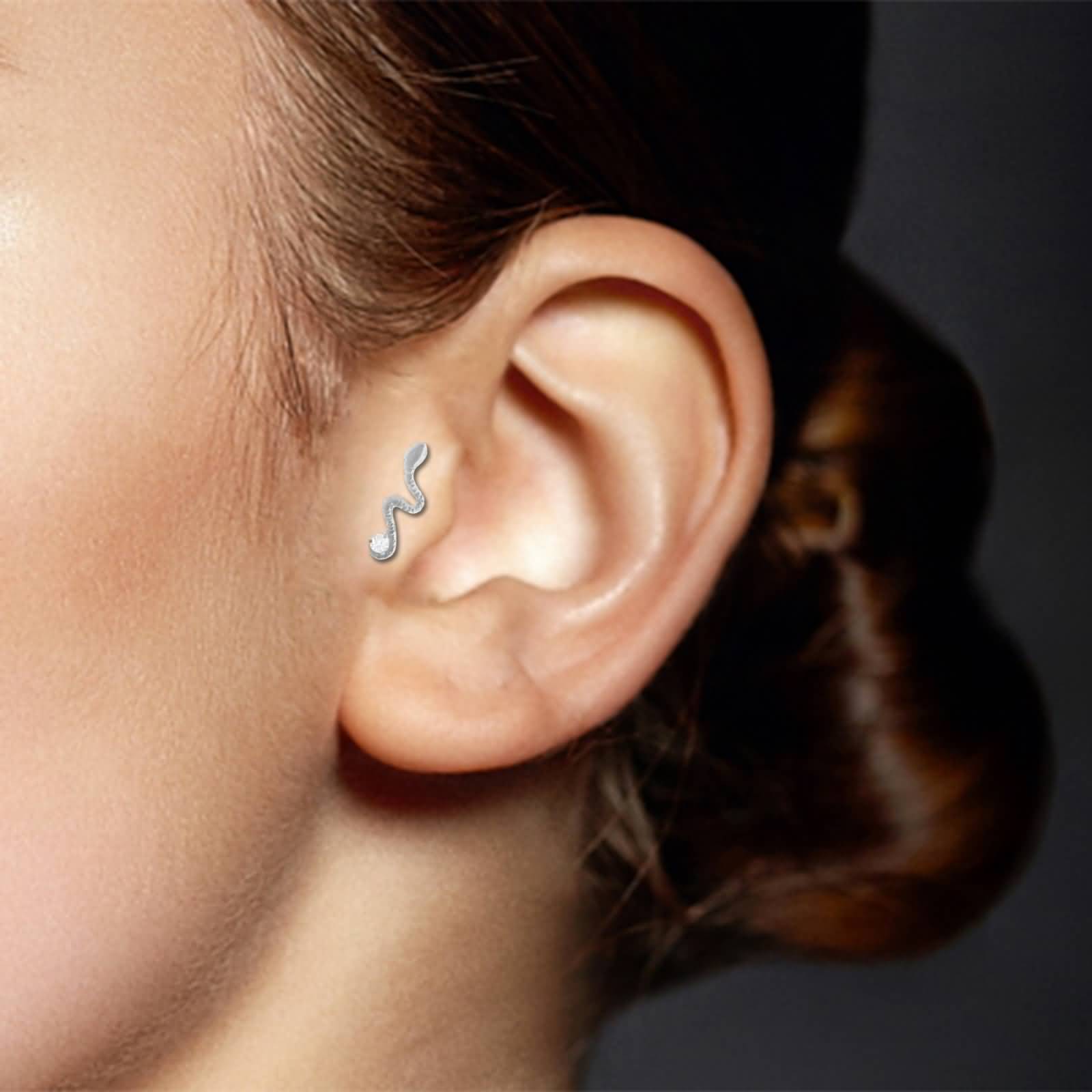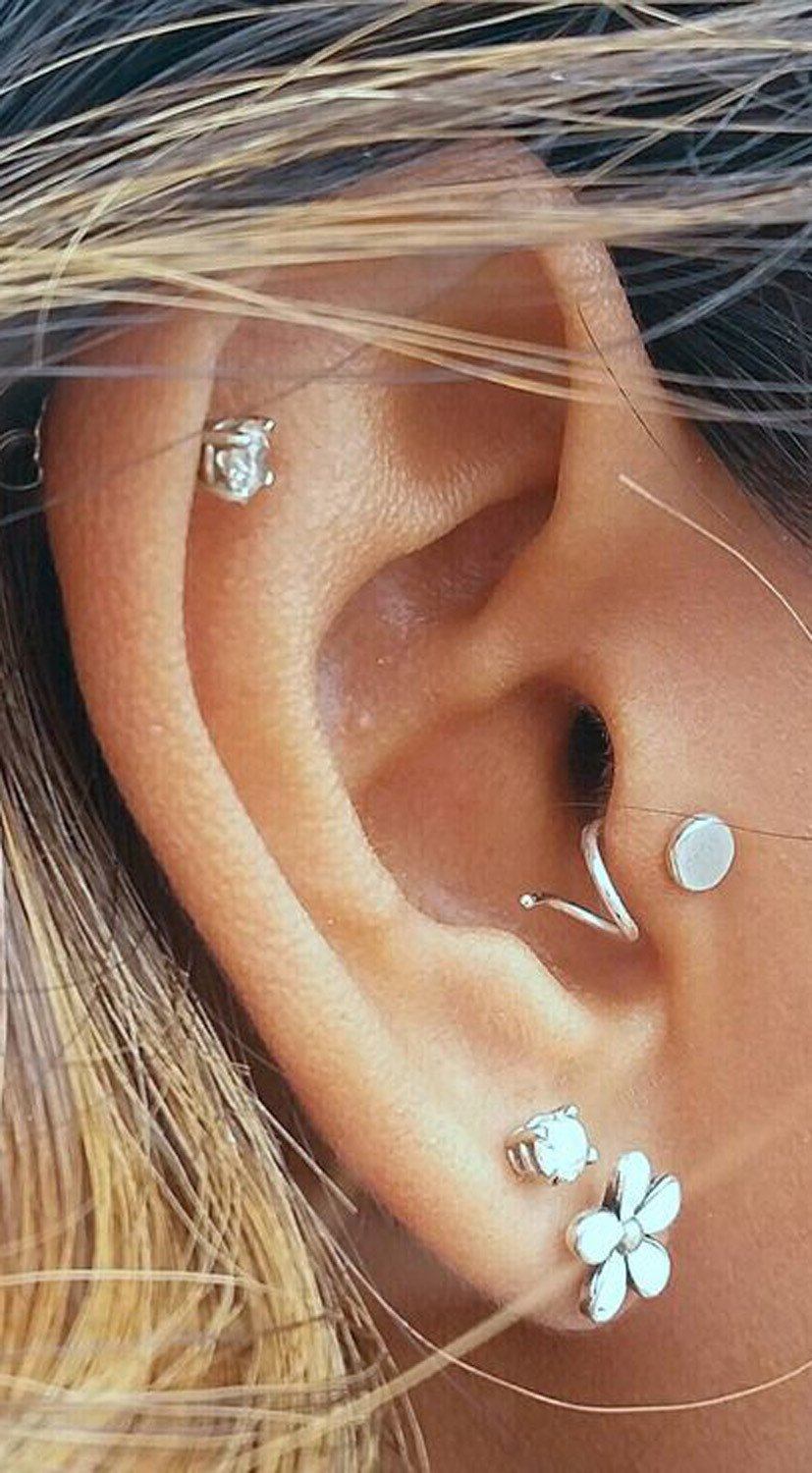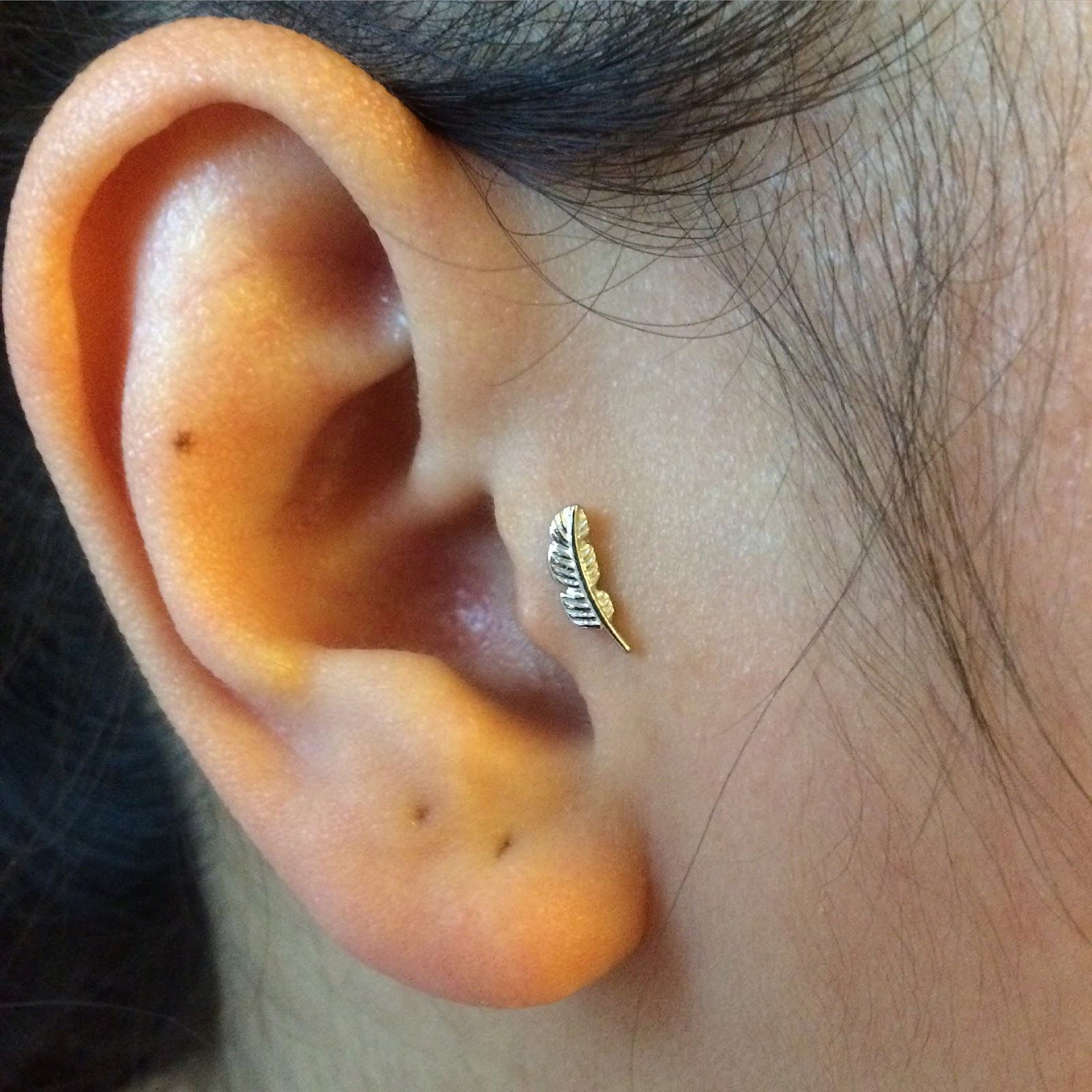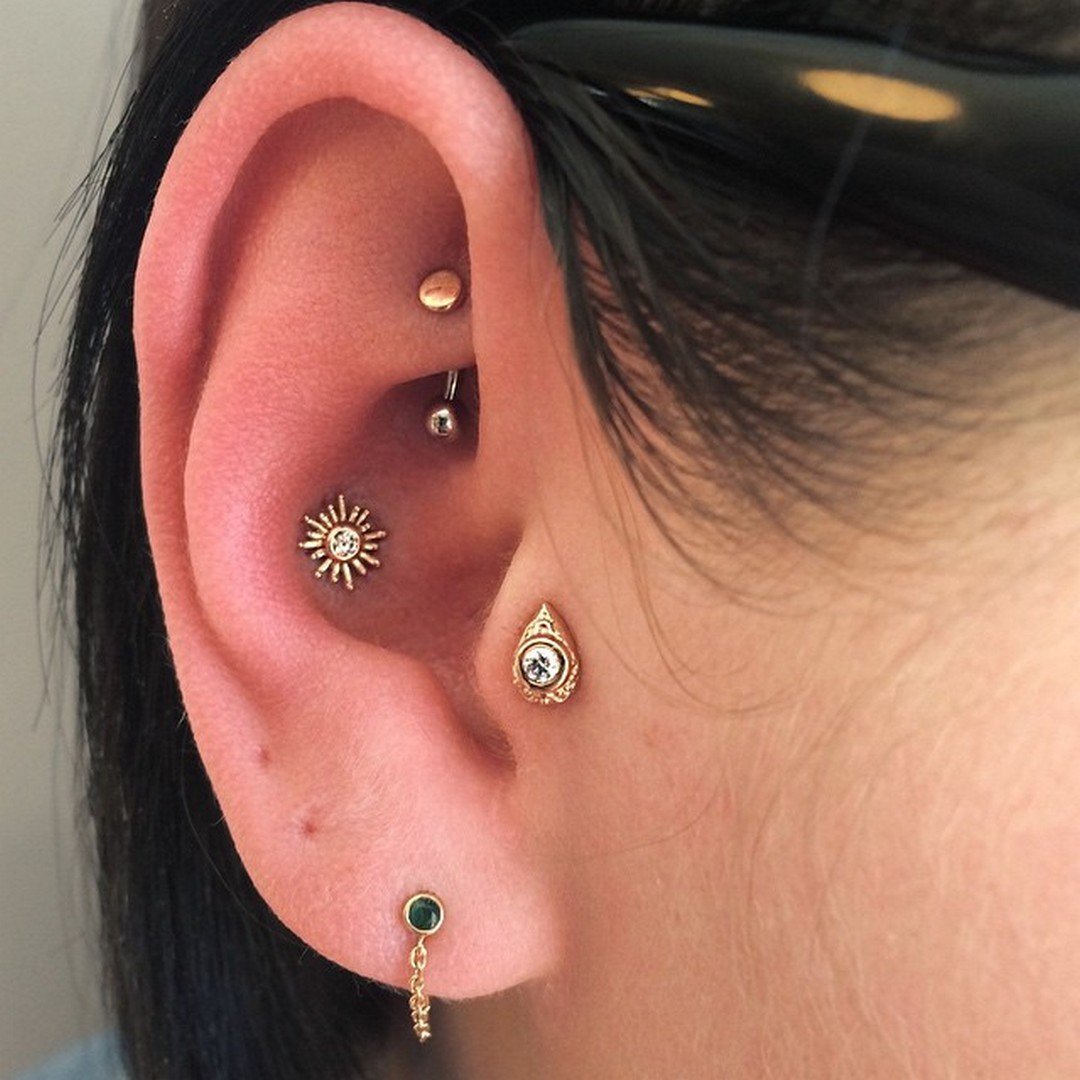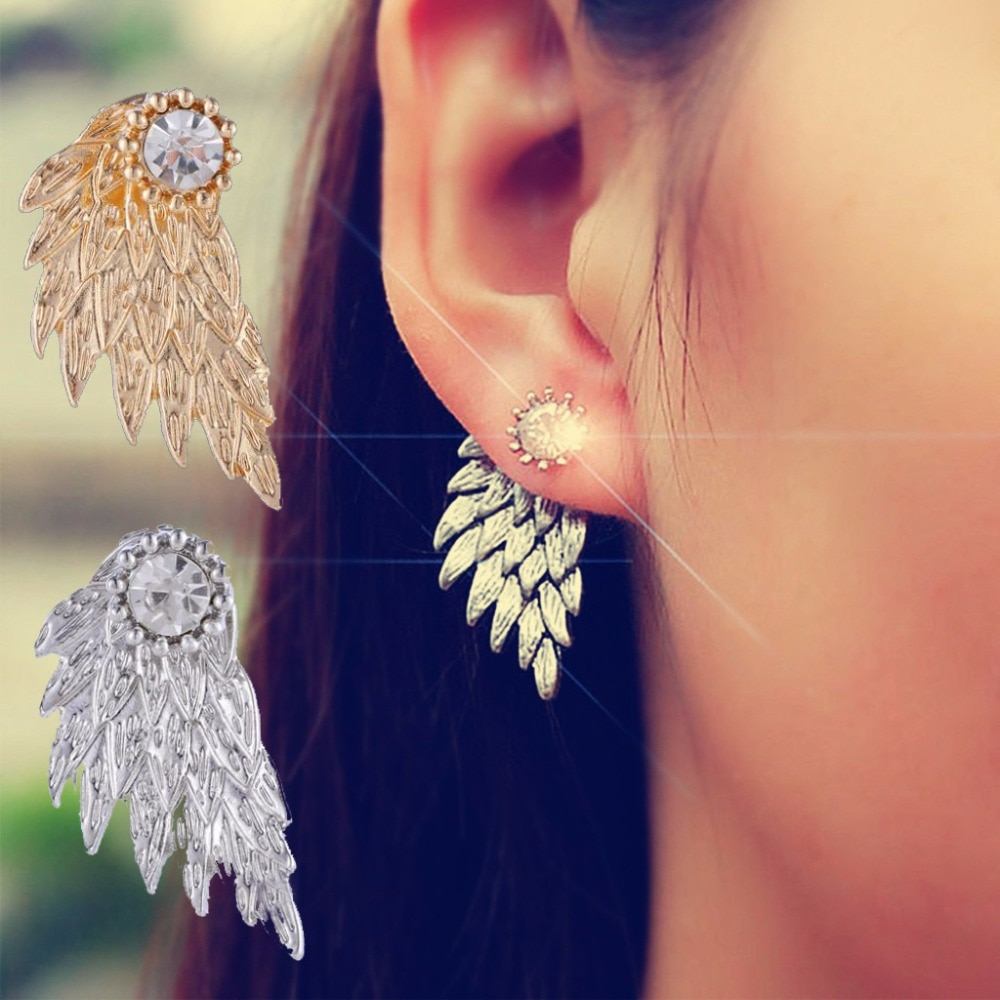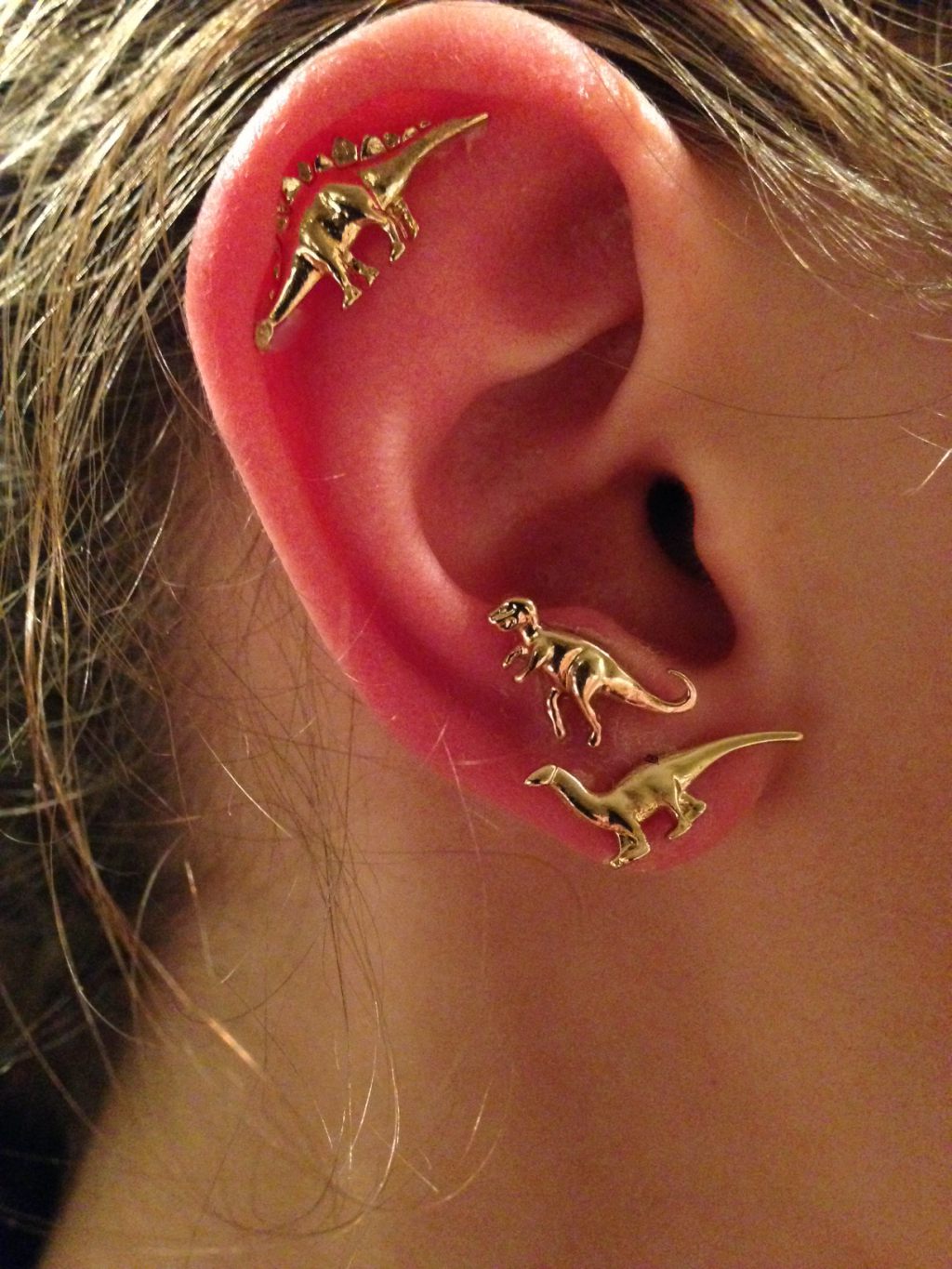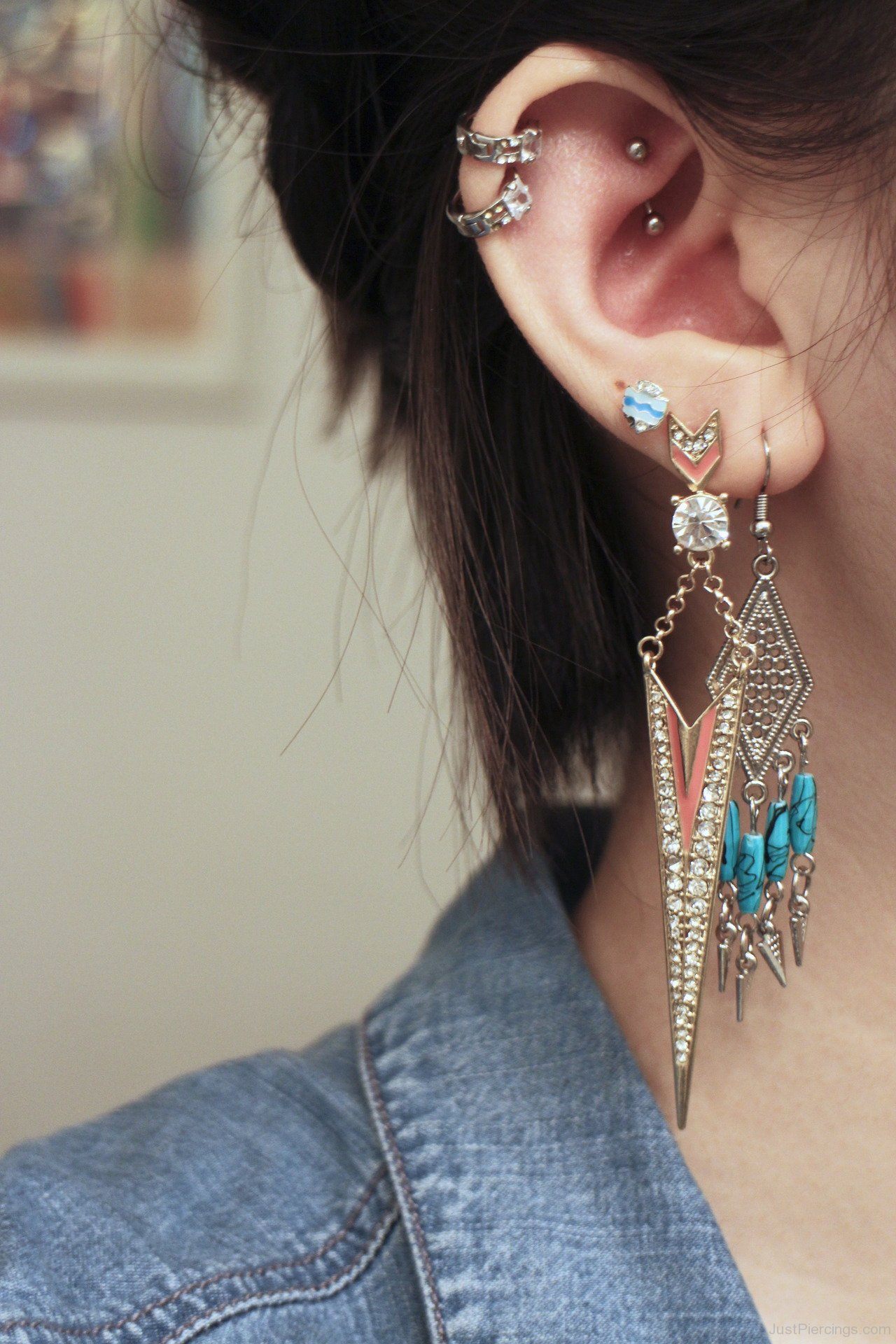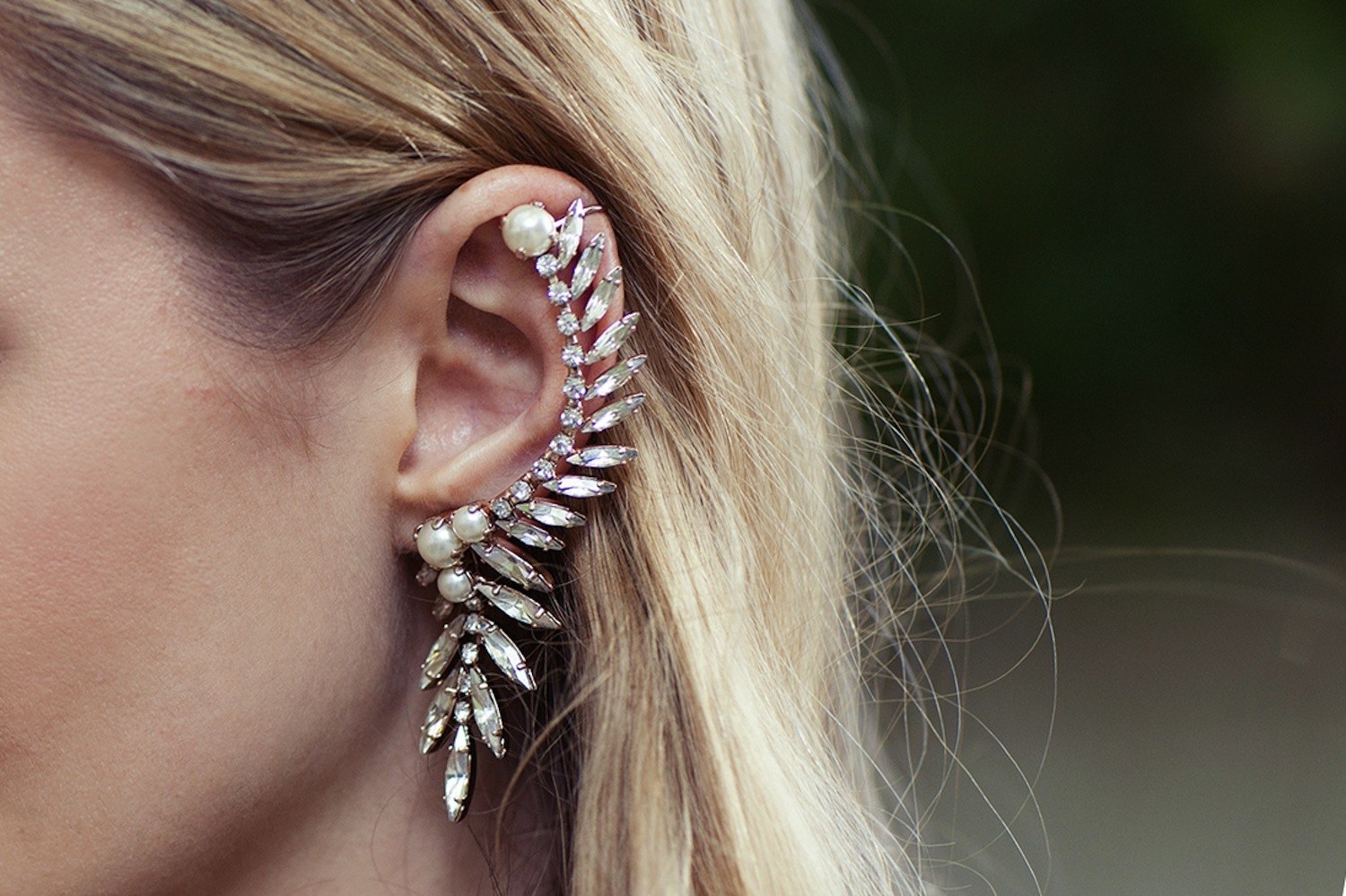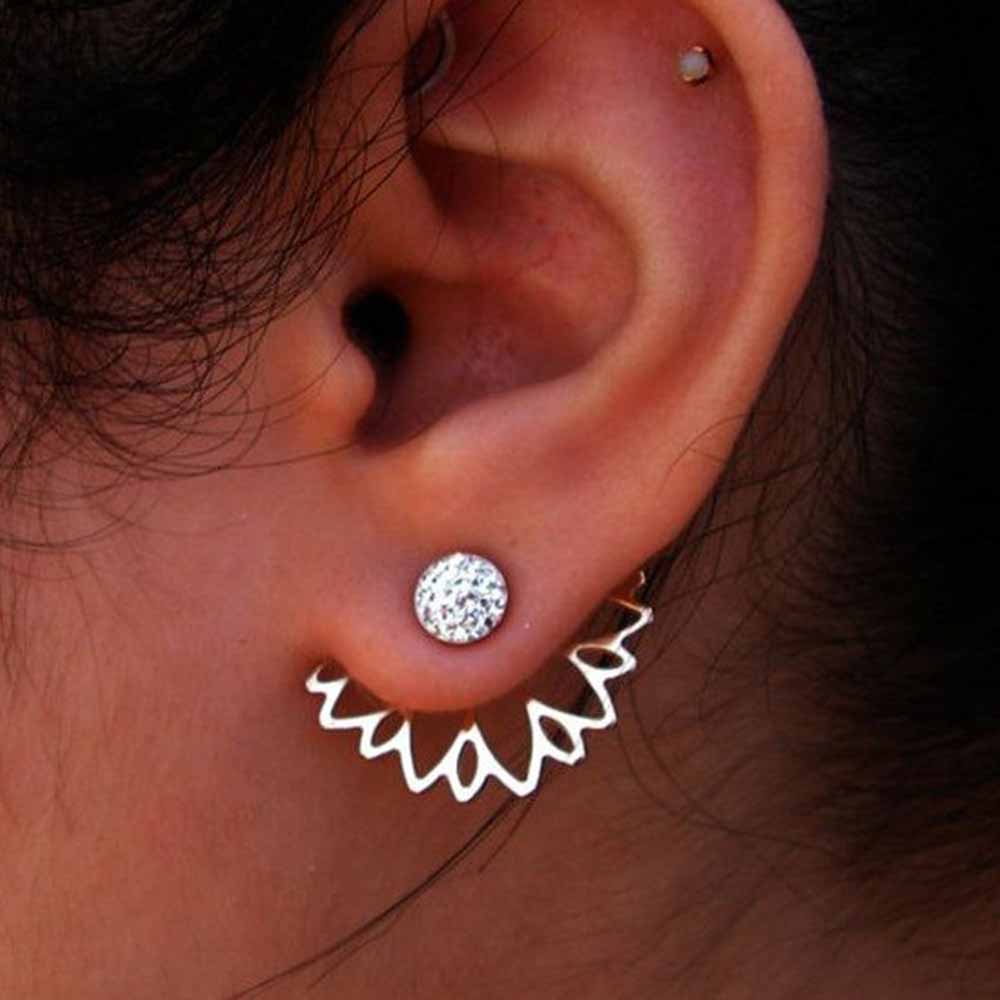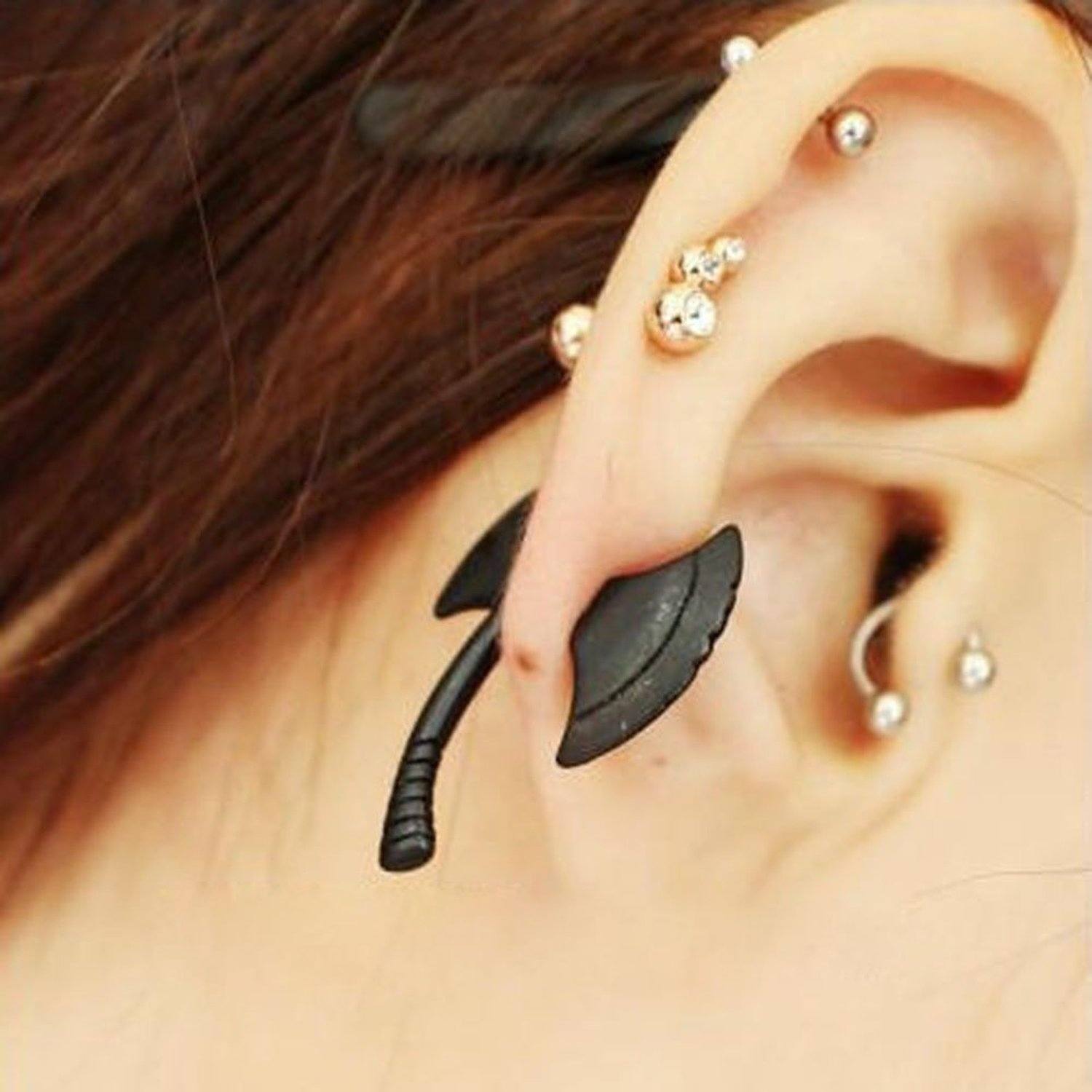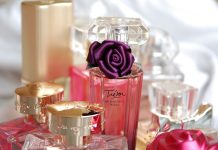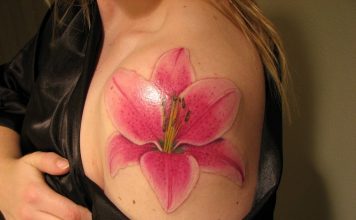Ear piercing has always been popular with both men and women. This is evidenced by numerous archaeological finds in different parts of the world. In our review, we will discuss in detail the topic of ear punctures, varieties and proper care for them.
Stylish ear piercing: types and complexity of punctures
Ear piercing in the world of piercing is considered the most popular and frequent. All this is due to the large selection of the puncture zone and the large space for inserting several decorations at once. We offer to get acquainted with each type of ear piercing in more detail.
Earlobe Puncture
One of the most common types, which is lightweight and safe. Earlobe piercing is done with a pistol or needle. Due to the absence in this area of cartilage and important points, a puncture on the ear lobe heals quickly and very rarely rejects the decoration material.
The puncture of the lobe is most often done without anesthesia, since this is the zone with the least sensitivity. Even a small child is able to withstand a second unpleasant sensation, which is why piercing ears is recommended for children aged 3 to 5 years.
Ear Piercing Tunnel
Piercing tunnel has a lot of fans, thanks in large part to its extravagant and defiant appearance. The tunnel is a type of ear piercing, in which, immediately after a puncture, a special spreader is inserted into the hole, and not an ornament.
The procedure is quite painful, because you have to be patient until the puncture reaches the size that matches the size of the jewelry. For the final result you need at least a month of hard work. Sometimes, to avoid a long procedure, an incision is made in the place of the intended tunnel, which is gradually stretched. Experts do not recommend resorting to such a radical method, since it is more painful and dangerous.
Helix Ear Piercing
Helix is the top of the ear curl. A puncture in this place implies an effect on cartilage, which is quite painful. The location of the decoration in the upper curl of the auricle does not hinder movement and does not interfere with its owner. There are no nerve endings in the cartilage, so the puncture of Helix is easily tolerated and heals.
Professional masters claim that the correct puncture of Helix is practically painless. If you still experience severe pain when you pierce, then it is better to turn to another master. When you pierce Helix, there is a nuance: you need to pick up the ornament for the puncture in advance, since the hole in the cartilage does not stretch like on an earlobe. It is important to choose the same size of the puncture and the diameter of the decoration.
Ear Piercing Forward Helix
Another type of cartilaginous puncture, with a hole made on the protivozavitke. On the auricle, you can make several punctures at once and wear 2 or more decorations. Puncture Forward Helisk is done with a needle. For complete healing of the puncture Forward Helix takes about 4 months.
Ear Piercing Industrial
Piercing Industrial is a puncture of the upper cartilage of the ear, in which the holes are connected by a barbell. In the classic view, Industrial represents a hole in the front of the auricle and on the opposite side. Industrial looks great on both men and girls.
A puncture at once two cartilages heals much longer than one. In the first days after the procedure it is not recommended to even touch the piercer in order not to injure the ear. Wearing hats and headphones is also prohibited.
Experienced specialists recommend wearing bioplast jewelry in the first months after a puncture. After the holes finally heal, you can change it to another material: medical steel, titanium or gold.
Tragus Ear Piercing
Puncture Tragus or trestle is a feminine type of piercing on the front of the auricle. The tragus is a cartilage tissue, so healing and pain will be equivalent to a Helix piercer.
Sleeping on the ear with Tragus piercing can not be a few months, as well as wearing headphones and tight hats. As jewelry for Tragus’s piercing, ordinary rings and carnations with stones are used.
Ear piercing: contraindications to the procedure
First, remember that piercing the ear and other parts of the body is only necessary in a licensed medical facility. Find an experienced specialist whose instrument sterility is beyond doubt. A professional master will refuse to puncture you if:
- you suffer from blood disorders
- you had a head injury
- suffer from diabetes
- at the time of the procedure are sick ARVI
- you are underage
- You are pregnant
- there are allergic reactions to medications
Ear piercing procedure
Each professional master must adhere to the standard protocol during the procedure of piercing. It includes:
- selection of a suitable decoration, assessment of its weight and diameter
- treatment of the future puncture site with an antiseptic or other disinfectant solution
- with the help of sterile tools that come from a special sterilizer, the master makes a puncture with a needle in a pre-marked place
- right after a puncture, an earring or expander is inserted into the hole
- in case of bleeding, the master must take all measures to stop it and remove residual blood. For this, the puncture is re-treated with an antiseptic and, if necessary, fixed with a plaster.
How to care for ear piercings
In the first days after a puncture, piercing is the most common wound on the body, which the body is trying to heal by all means. In order for the piercing to heal safely and you can enjoy an attractive look of jewelry in your ear, you need to follow important rules:
- during the healing of the puncture, touch the piercer only with thoroughly washed hands
- try not to touch the ornament at all, especially to move it. It can damage the wound and the healing will last much longer.
- It is not recommended to visit the bath and sauna, because a moist environment promotes the growth of bacteria
- Try to collect the hair in the tail or fix them with hairpins. Accidental contact with the hair could cause injury and bleeding.
- during the inflammatory process in the wound, daily treat it with an antiseptic, regenerating cream. If the suppuration does not pass for several days, it is recommended to consult a doctor.
Ear piercing is the most popular type of decoration of your own body, which persists for quite a long time and with complete healing does not cause any particular problems to its owner. If you decide on ear piercing, you should consult with your doctor and select a proven master.



